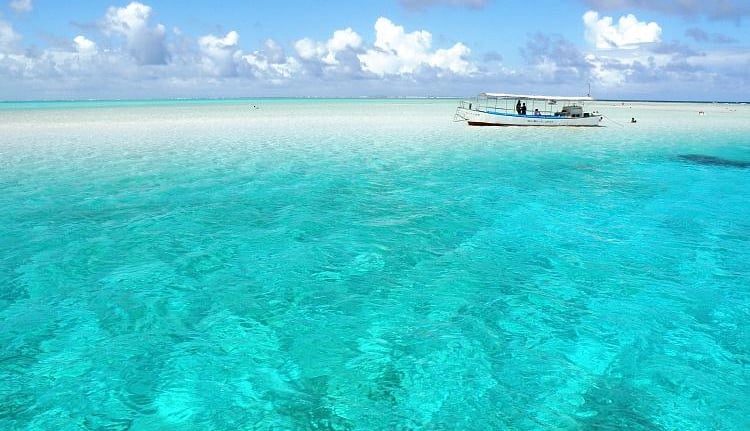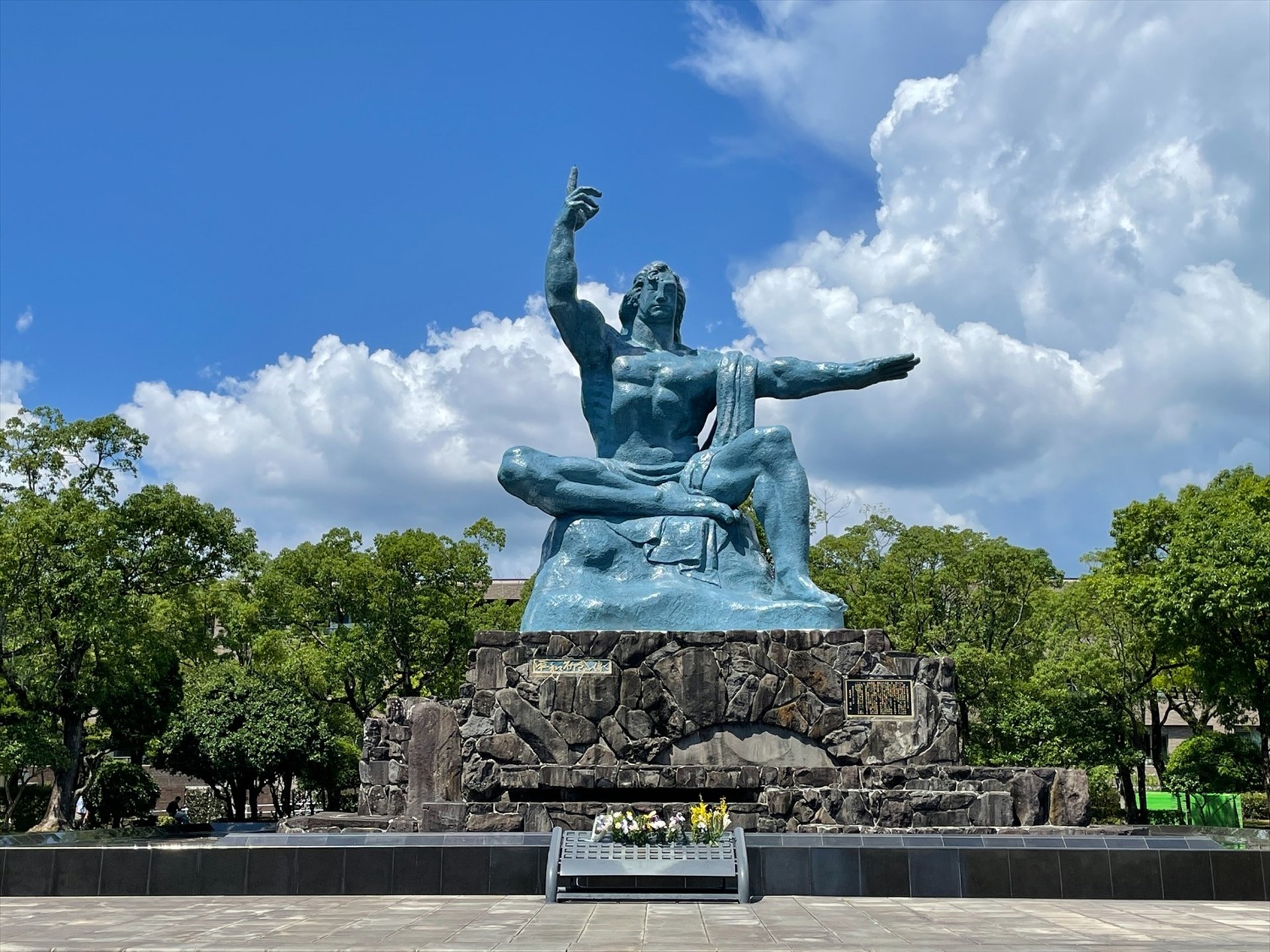
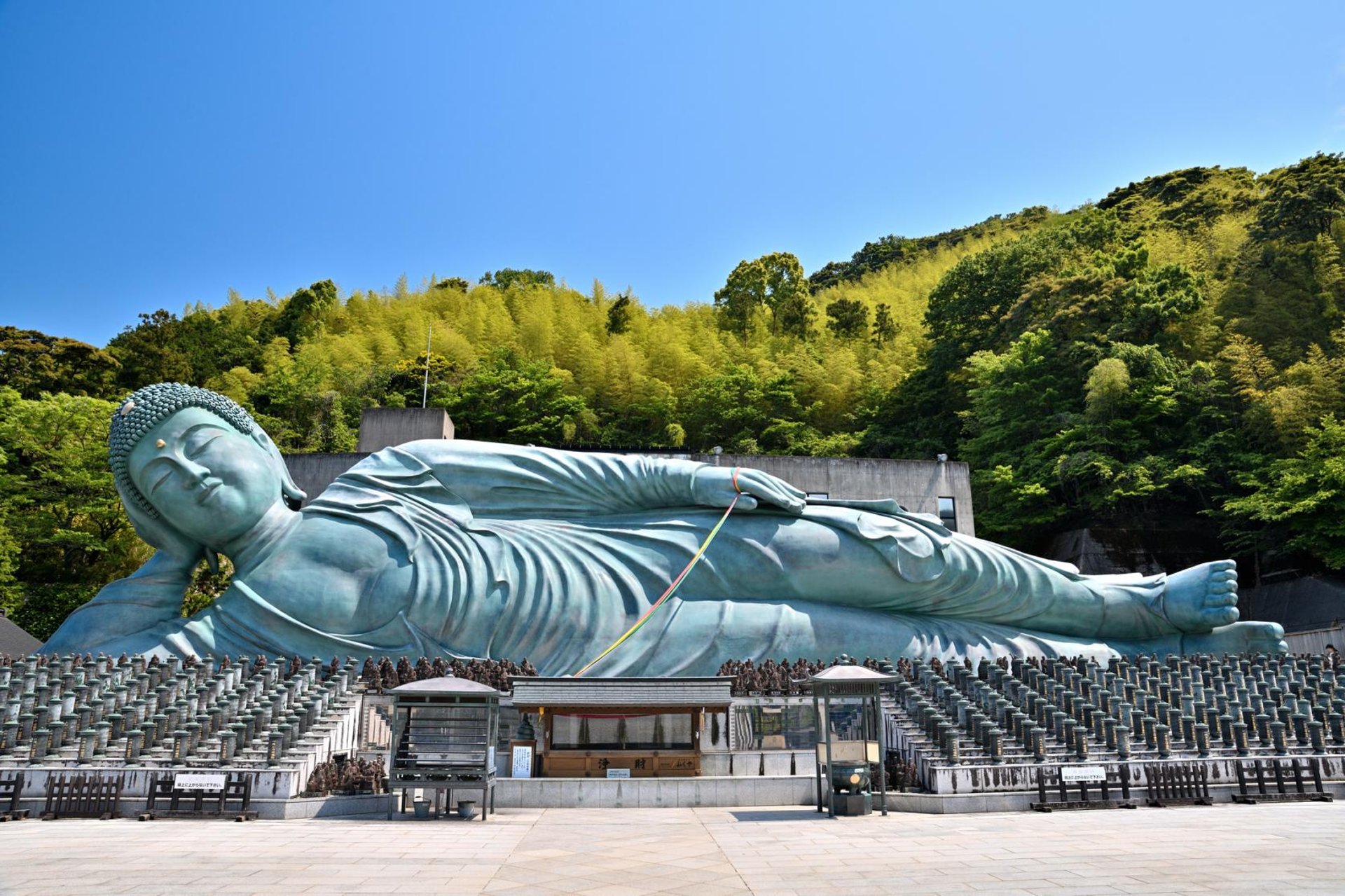
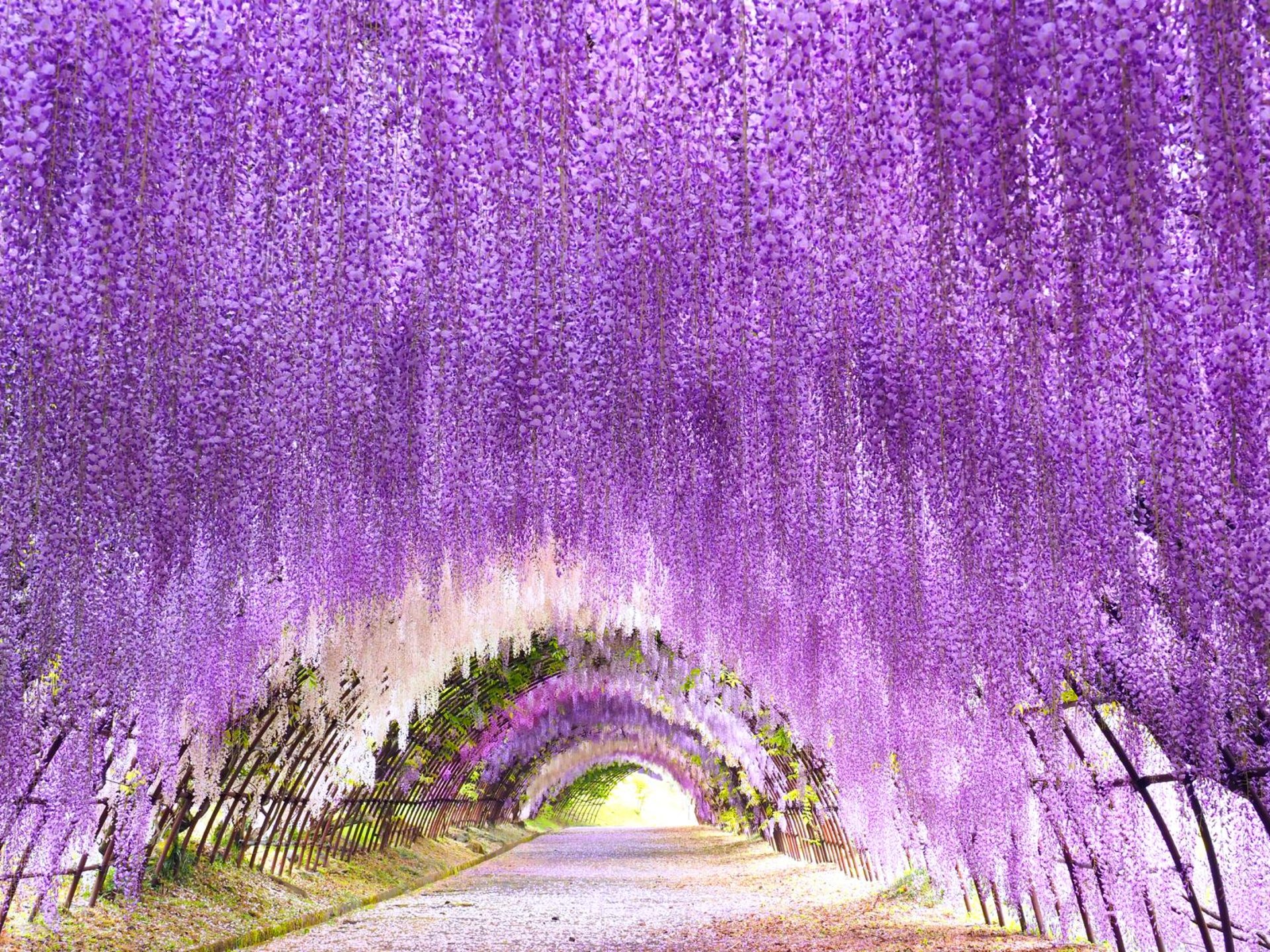
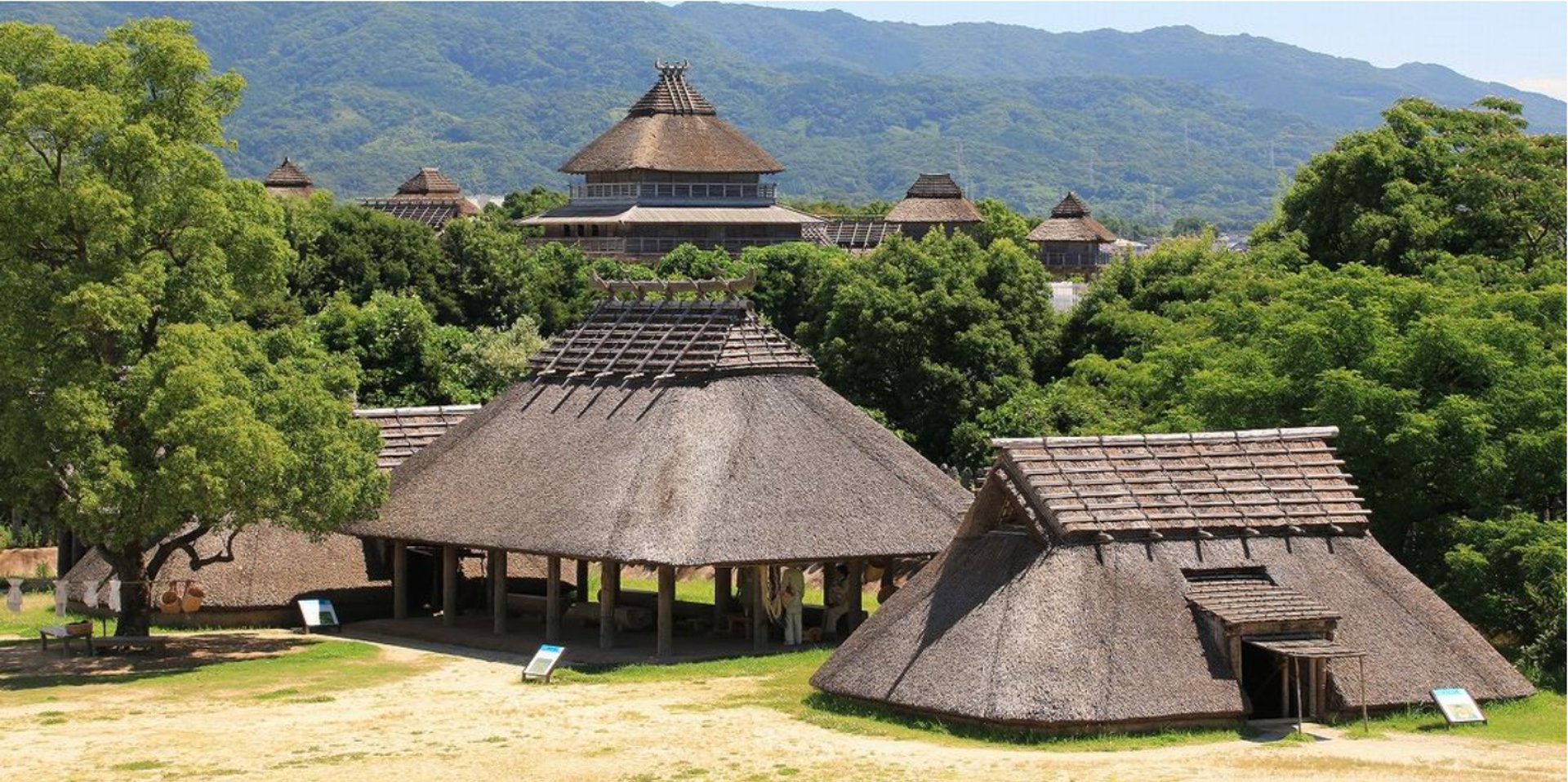
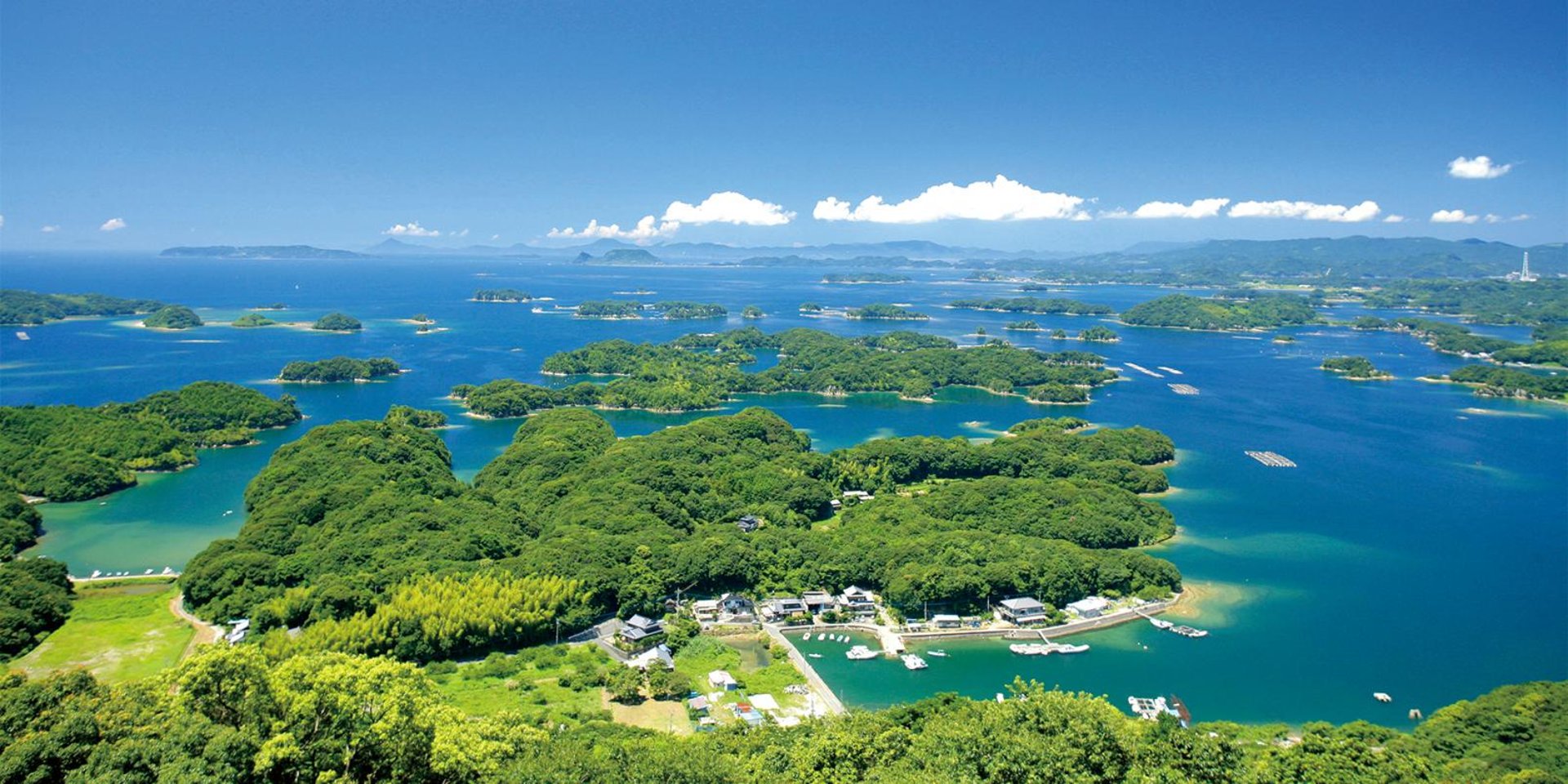
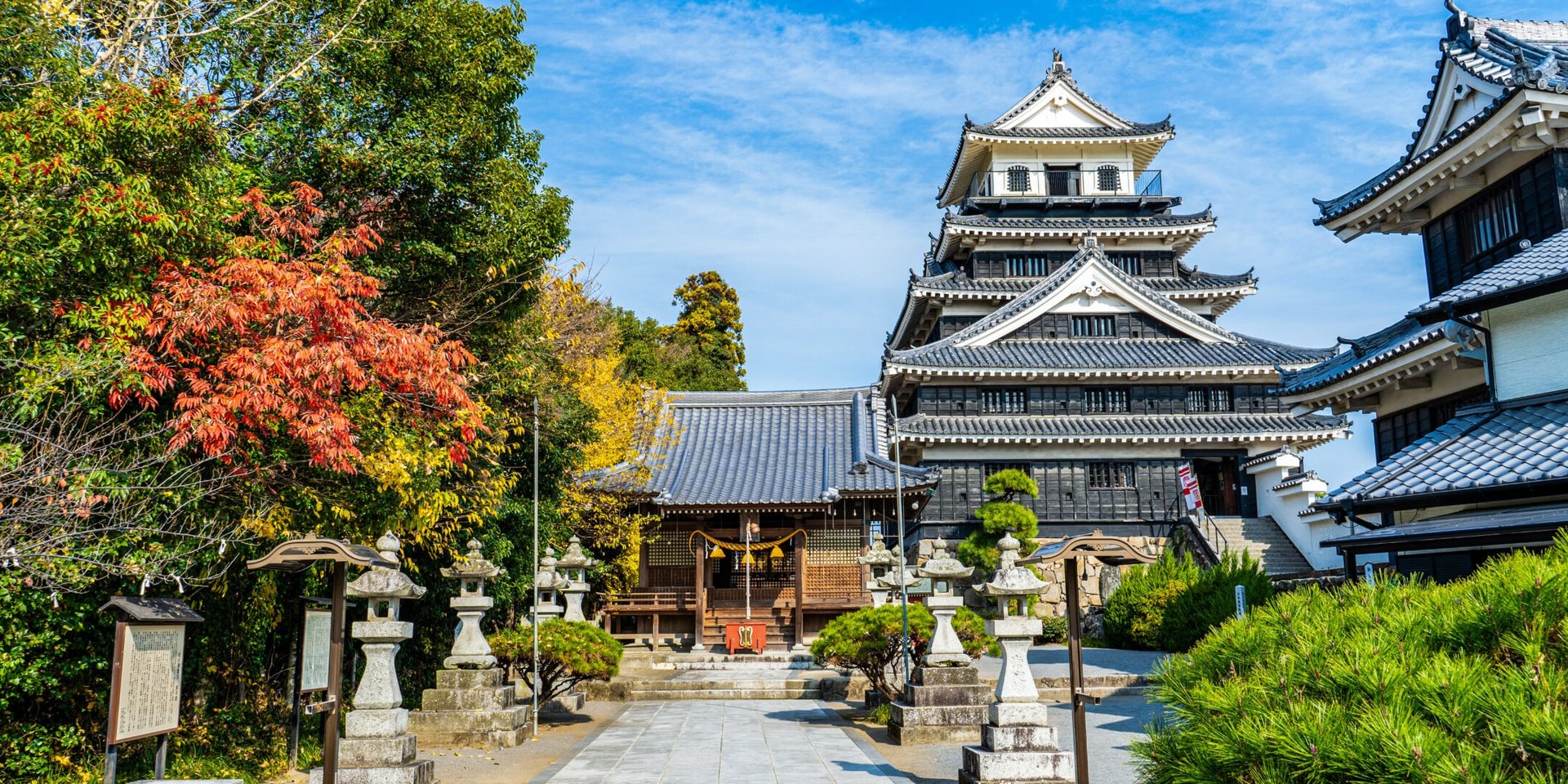
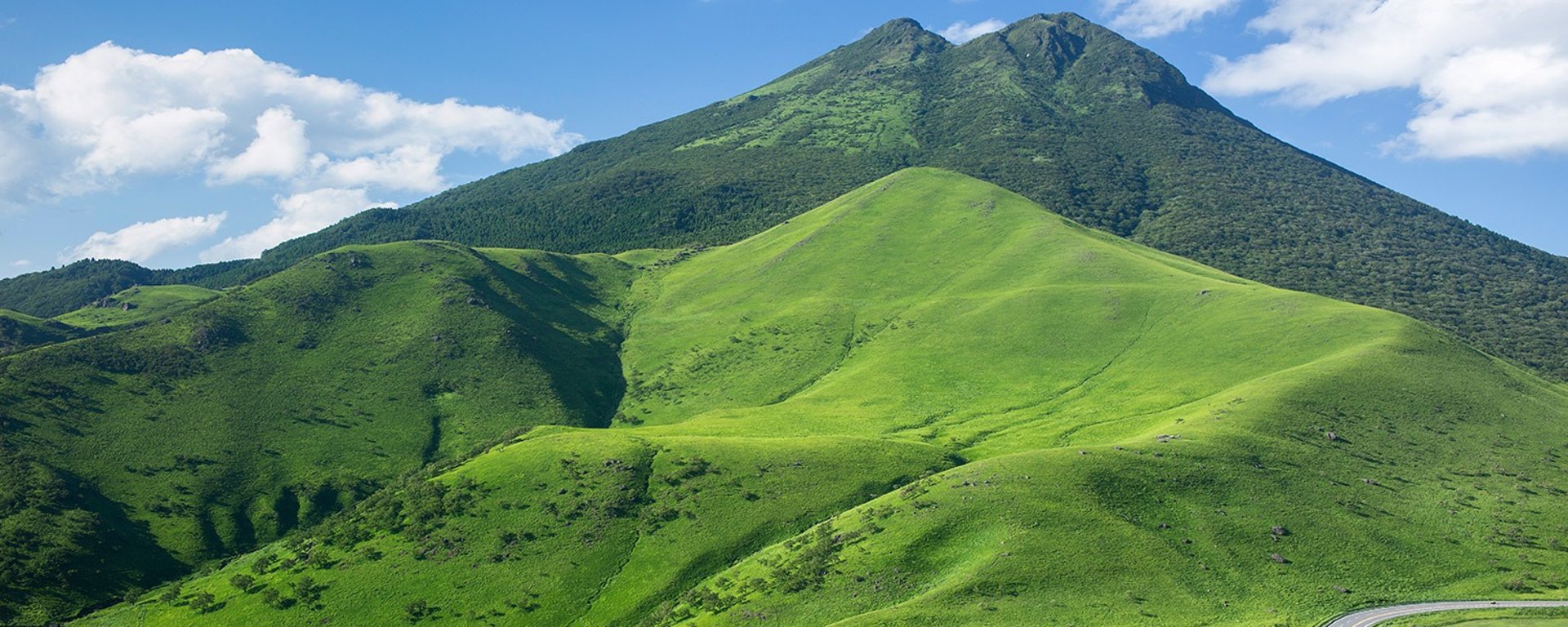
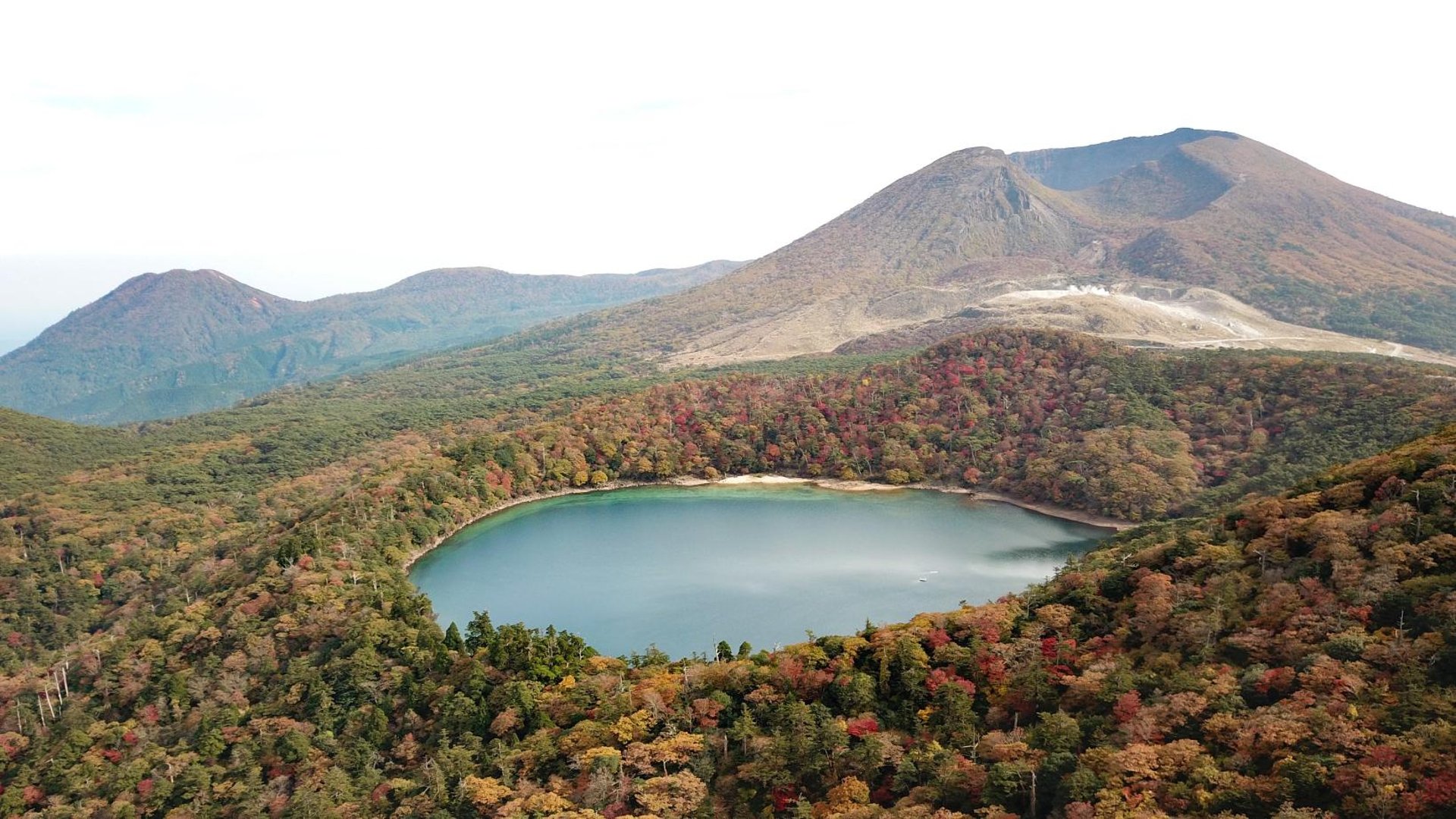
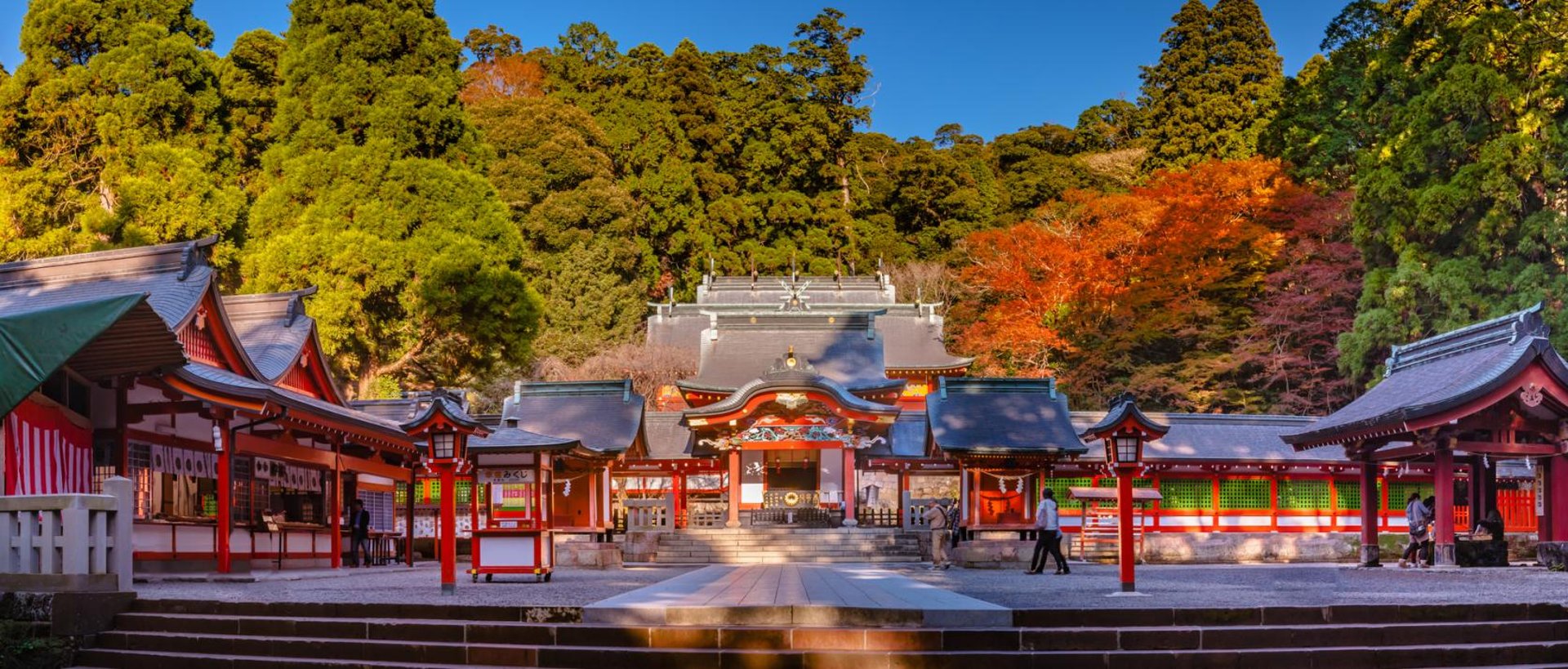
Kyushu
Kyushu is an island located in the southwestern part of Japan and is one of the main regions of Japan along with Honshu, Shikoku, and Hokkaido. The Kyushu region consists of seven prefectures: Fukuoka, Saga, Nagasaki, Kumamoto, Oita, Miyazaki, and Kagoshima. It is also the “southernmost mainland” excluding Okinawa Prefecture. Characterized by its mild climate, rich nature, historical heritage, and unique culture, it is popular among tourists from Japan and abroad. Here are some of the attractions of the sightseeing spots.
Kyushu's Seasonal Attractions
Kyushu is located in the southwestern part of Japan and has a variety of attractions, including nature, history, culture, and food. There are many ways to enjoy each season through the scenery, events, and local specialties of each season. Below, we will introduce the charms of Kyushu for each of the four seasons: spring, summer, autumn, and winter.
Spring (March to May)
A season of flowers and festivals.
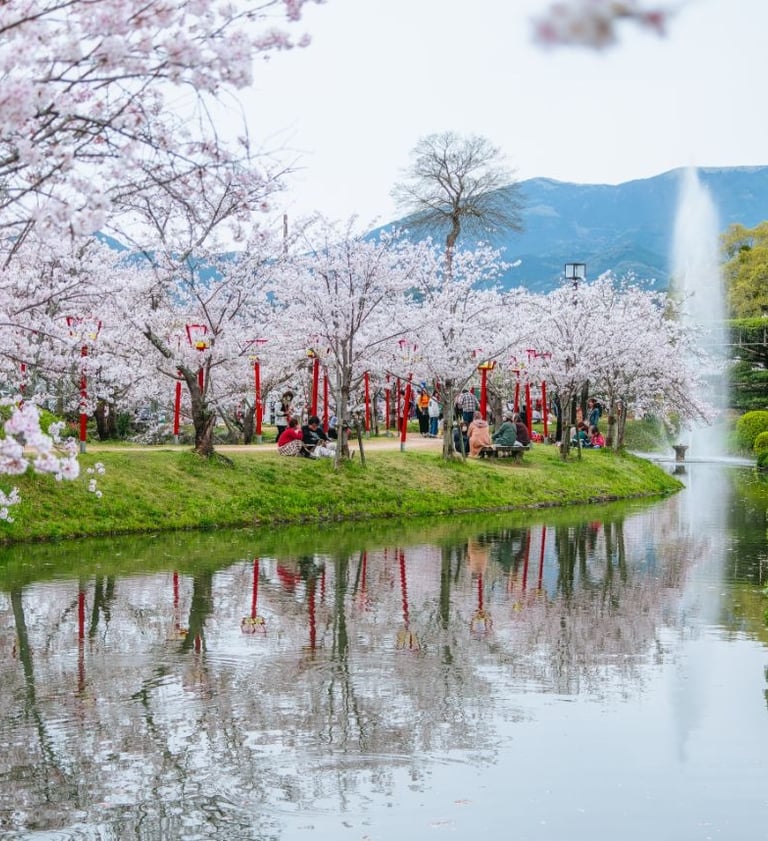

Attractions and Activities
・Tours of famous cherry blossom spots
At Kumamoto Castle in Kumamoto Prefecture, Maizuru Park in Fukuoka Prefecture, and Ogi Park in Saga Prefecture, cherry blossoms reach their peak from late March to early April. You can enjoy beautiful rows of cherry blossom trees and cherry blossom viewing spots in various places. Ogi Park is a famous cherry blossom spot that has been selected as one of the 100 best cherry blossom spots in Japan, with about 2,000 cherry trees in full bloom.
・Spring festivals and events
Nagasaki Pelon Boat Race (Nagasaki Prefecture)
A traditional event held during the Lunar New Year, in which colorful boats compete in a rowing race.
Hakata Dontaku Port Festival (Fukuoka Prefecture)
One of Japan's largest citizen-participation festivals, held from May 3rd to 4th. The whole city is excited by parades and music.
・Spring flavors
Bamboo shoot dishes
Stews and rice dishes made with fresh bamboo shoots from all over Kyushu are spring staples.
Cherry picking
You can experience cherry picking in Yame City, Fukuoka Prefecture, and Taketa City, Oita Prefecture.
Autumn (September to November)
Summer in Kyushu is characterized by a particularly hot and humid climate compared to other parts of Japan. Summer in Kyushu has many attractions, including the sea, mountains, festivals, and delicious summer flavors.
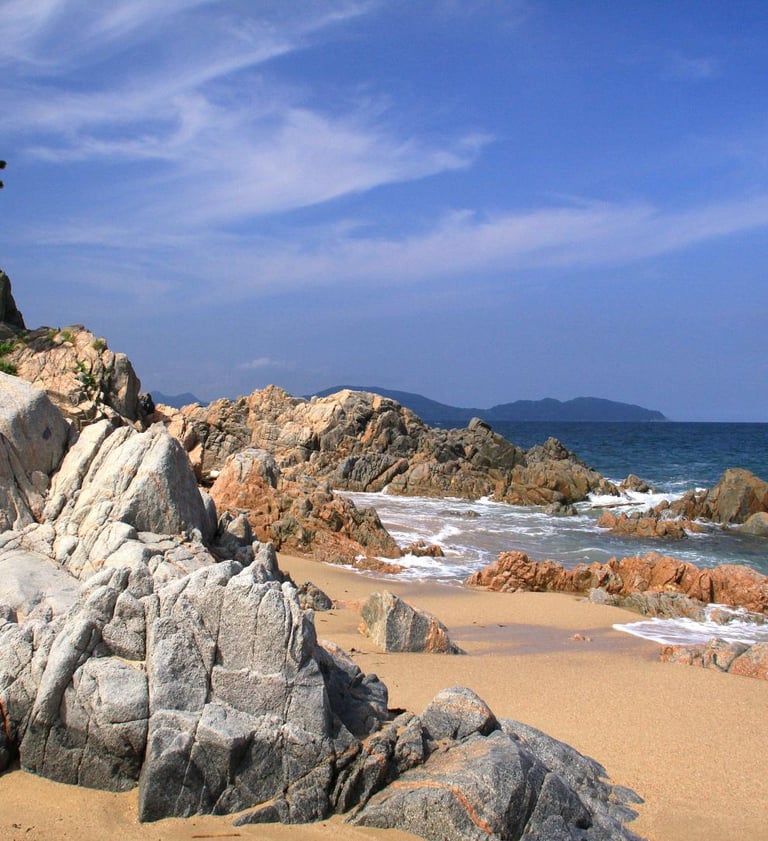

Attractions and Activities
・Beach
Itoshima Coast (Fukuoka Prefecture)
White sand beaches and crystal clear waters make it a popular destination for marine sports such as surfing and SUP.
Shika Island (Fukuoka Prefecture)
A small island famous for being the site of the discovery of the "Gold Seal," it is attractive for its calm waters and rich nature.
・Trekking and mountain climbing
Mount Aso (Kumamoto Prefecture)
Mount Aso, known as an active volcano, is cool even in summer and has a trekking course where you can enjoy the magnificent caldera topography.
Mount Kokonoe (Oita Prefecture)
Popular hiking routes include "Mount Kuju" and "Hokkein Onsen."
・Summer festivals and fireworks
Hakata Gion Yamakasa (Fukuoka Prefecture)
A traditional festival designated as an Important Intangible Folk Cultural Property of Japan, held from July 1st to 15th. The gorgeous "Kakiyamabiko" floats run through the city.
Oita Usuki Fireworks Festival (Oita Prefecture)
The festival is characterized by a fantastic display that combines fireworks with special effects.
Autumn (September to November)
Autumn in Kyushu is a season of mild, comfortable weather, perfect for enjoying nature, culture, and food. There are many attractions, including beautiful scenery at autumn foliage viewing spots, traditional festivals and events, and unique autumn flavors.
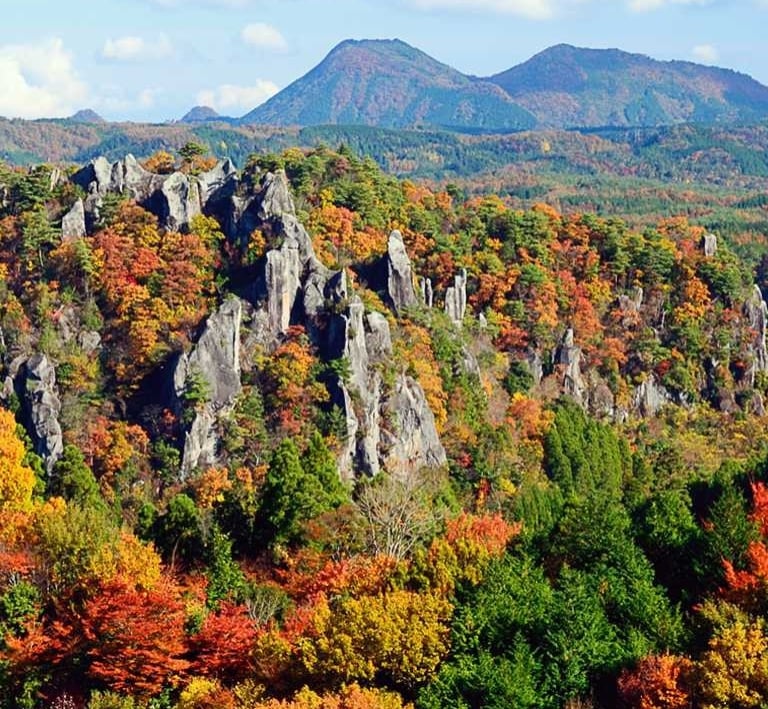

Attractions and Activities
・Autumn foliage viewing spots
Yabakei (Oita Prefecture)
One of Japan's three most beautiful landscapes, the autumn scenery is beautiful. You can enjoy the autumn leaves on a sightseeing boat or while hiking.
Mount Unzen (Nagasaki Prefecture)
The area around Mount Unzen Fugen is a beautiful spot for viewing autumn scenery, with the colored trees and mist in harmony.
Takachiho Gorge (Miyazaki Prefecture)
The view of the columnar jointed cliffs and the bright red autumn leaves is a must-see.
・Autumn harvest festivals
Chikugo River Balloon Fiesta (Fukuoka Prefecture)
An international hot air balloon competition held from late October to early November. Colorful balloons light up the sky.
Karatsu Kunchi (Saga Prefecture)
The highlight is the traditional Hikiyama parade held from November 2nd to 4th.
Winter (December to February)
Winters in Kyushu are relatively warm and there is little snow compared to other parts of Japan, but there are still plenty of events and activities to enjoy the seasons, as well as a rich food culture that is unique to winter.
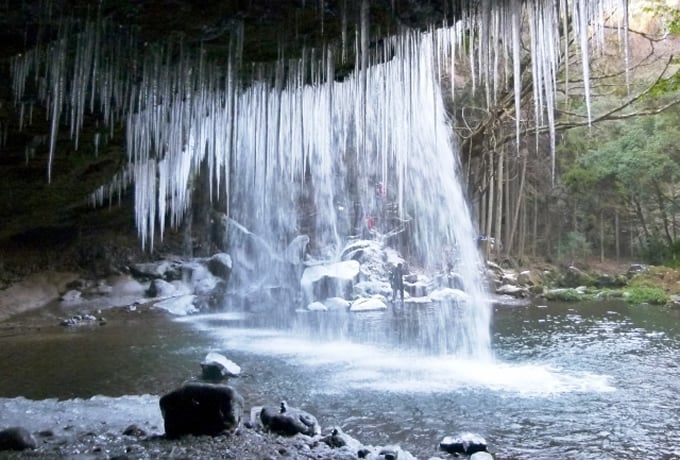

Attractions and Activities
・Illuminations
Huis Ten Bosch (Nagasaki Prefecture)
The winter-only illumination event "Kingdom of Light" is a fantastic space where the entire theme park is enveloped in light.
Canal City Hakata (Fukuoka Prefecture)
A popular Christmas event that combines a giant fountain show and illuminations in a shopping mall.
・Hot Spring Tours
Beppu Onsen (Oita Prefecture)
One of Japan's leading hot spring areas, it's perfect for warming up during the cold winter months. The "Hell Tour" is also a must-see.
Kurokawa Onsen (Kumamoto Prefecture)
A hidden hot spring rich in nature, the open-air bath experience in the snowy scenery is very popular.
・Winter Festivals
Usuki's Naked Mairi (Oita Prefecture)
A type of cold-weather training held in mid-January, this is a brave traditional event where men visit a shrine naked.
Moji Minato Yaki Curry Festival (Fukuoka Prefecture)
A winter gourmet event where you can enjoy the local specialty "yaki curry".
Popular Attractions in Kyushu
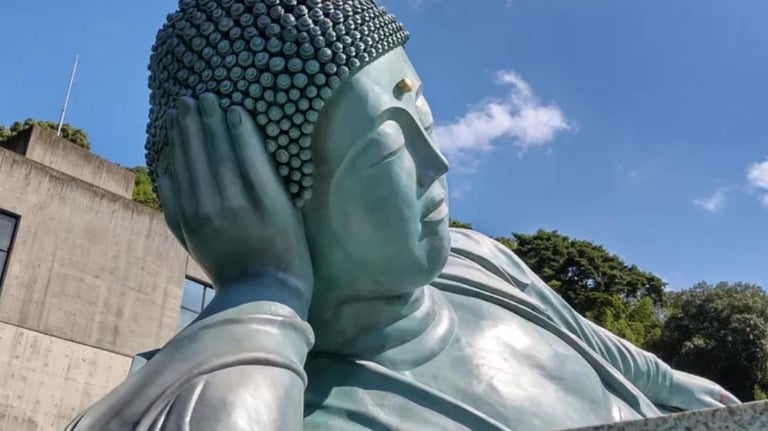

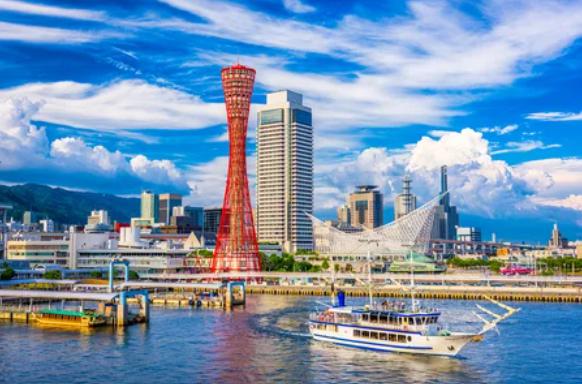

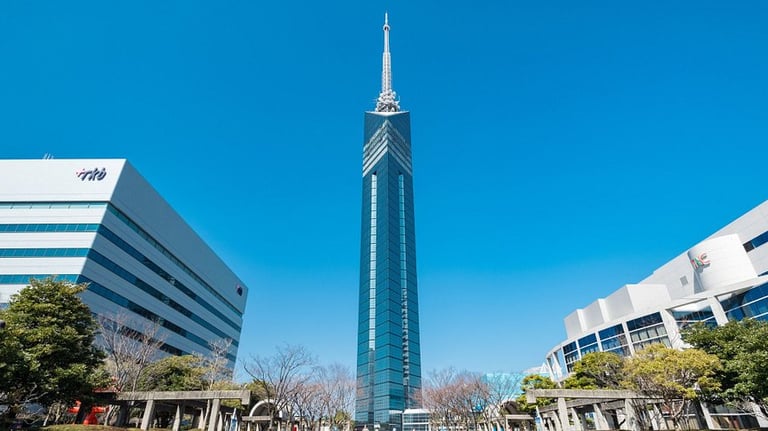

Fukuoka Prefecture
Fukuoka Prefecture is located in the northern part of the Kyushu region of Japan, and its prefectural capital is Fukuoka City, the largest city in Kyushu. Fukuoka Prefecture is a tourist destination that combines historical heritage, abundant nature, and delicious food culture, attracting many tourists from both within Japan and overseas. It is also a transportation hub with Hakata Port and Fukuoka Airport, making it an area with very easy access. Below, we will introduce in detail the main tourist spots that you should definitely visit when visiting Fukuoka Prefecture.
Nanzoin Temple was founded in 1704 during the Edo period and is a Soto Zen temple in Sasaguri Town, Fukuoka Prefecture, Japan. It is characterized by its magnificent architecture and one of the largest reclining Buddha statues in Japan. The temple has also attracted attention as a tourist destination, attracting many worshippers and tourists. It also has unique structures such as the "Space Buddha" and the "World Peace Pagoda," and has a unique atmosphere that combines local culture with modern art.
Nanzoin Temple
Hakata Port Tower
Hakata Port Tower is a symbolic observation tower located in Hakata Ward, Fukuoka City, Fukuoka Prefecture, Japan, and was constructed in 1964. It is approximately 103 meters high, and from its observation deck 80 meters above ground level, visitors can see the city of Fukuoka, Hakata Bay, and even Shiga Island in the distance. It is also known as one of the “Three Great Towers of Japan” and is a popular tourist attraction. The outer wall of the tower has a white and red striped pattern, which functions as an “air obstruction light” to ensure the safety of marine traffic.
Fukuoka Tower
Fukuoka Tower is a 234-meter-high observation tower and a tourist attraction located in Fukuoka City, Fukuoka Prefecture, Japan. It features an observation deck with its beautiful design and spectacular views, which harmonizes with the surrounding nature such as “Uminonakamichi” and "Hakata Bay. Also known as “the tallest seaside tower in Japan,” it opened in 1989 and has since become a popular spot visited by many tourists. It is characterized by its white triangular frame structure, and its mirror-like exterior walls, called “mirror surfaces,” reflect sunlight and harmonize with the surrounding landscape.
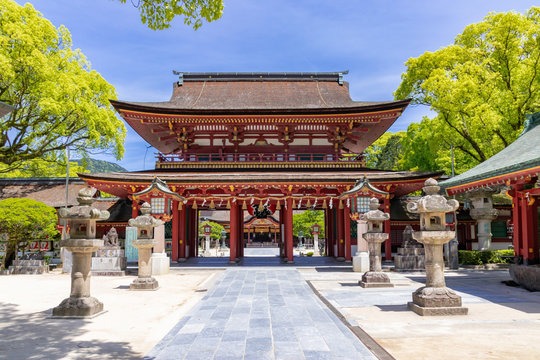

Dazaifu Tenmangu Shrine
Dazaifu Tenmangu Shrine is a historic shrine located in Dazaifu, Fukuoka Prefecture, Japan. It was founded in 919 during the Heian period and has a history of over 1,100 years. It enshrines Sugawara no Michizane, known as the "god of learning." It is revered as the head shrine of the approximately 12,000 Tenmangu shrines across the country, and is a popular tourist destination visited by many worshippers, mainly students and students preparing for exams. It is also famous as a plum blossom viewing spot, and within the grounds there is a legendary plum tree called "Tobiume," where approximately 6,000 plum blossoms bloom in spring.
Kokura Castle
Kokura Castle is a historic castle located in Kokurakita Ward, Kitakyushu City, Fukuoka Prefecture, Japan. It is a flatland castle built during the Edo period. Kokura Castle uses an architectural style called "Kara-zukuri" and is characterized by a design in which the roof gets larger the higher it goes, unlike a normal castle tower. The castle was built around 1602 by Hosokawa Tadaoki. Many of the buildings were demolished due to the castle abolition order during the Meiji period, but the castle tower was restored in 1959.
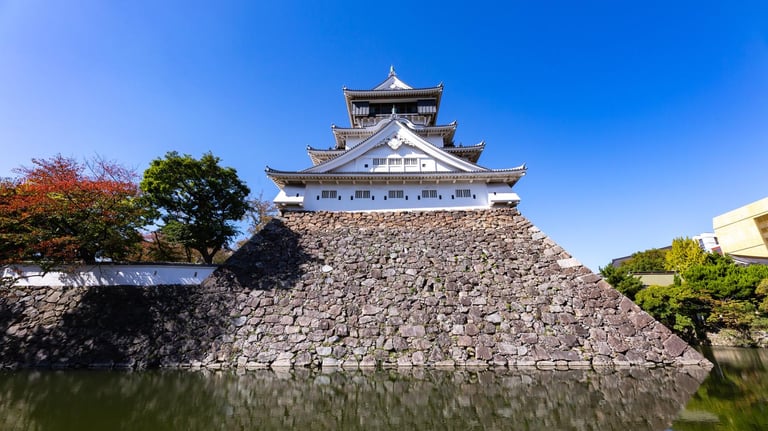

Kushida Shrine is a historical shrine located in Hakata-ku, Fukuoka City, Fukuoka Prefecture, Japan, and has long been popular among the local people as the "general guardian of Hakata. Kushida Shrine is said to have been founded in 757. Since the Heian period (794-1185), the shrine has been revered as the general guardian of the city of Hakata. During the Meiji period (1868-1912), the shrine was renamed to its current name, Kushida Shrine, in accordance with the Shinto and Buddhism Separation Order.
Kushida Shrine
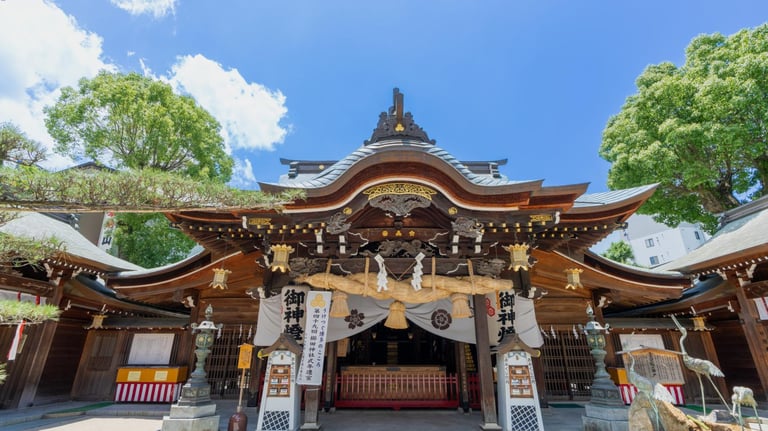

Keya no Ooto
Keya no Ooto is a spectacular natural landscape spot in Itoshima City, Fukuoka Prefecture, Japan, characterized by its marine erosion facing the Genkai Sea. A huge arch-shaped reef about 64 meters high is known as "Daimon". This beautiful place is counted as one of the three largest basalt caves in Japan. It is a great photo spot for tourists, and its impressive scenery fascinates all who visit.
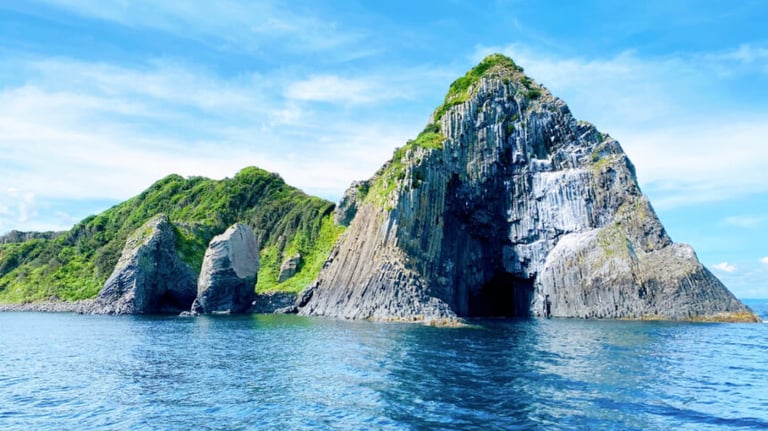

Senbutsu Shonyudo
Senbutsu Shonyudo (Thousand Buddha Caves) are mysterious limestone caves created by nature in Kitakyushu City, Fukuoka Prefecture, Japan, and named after the countless small Buddha-like stalactites that dot the interior. The 1-kilometer-long cave is filled with stalactites and stalagmites of various sizes, offering a fantastic view.
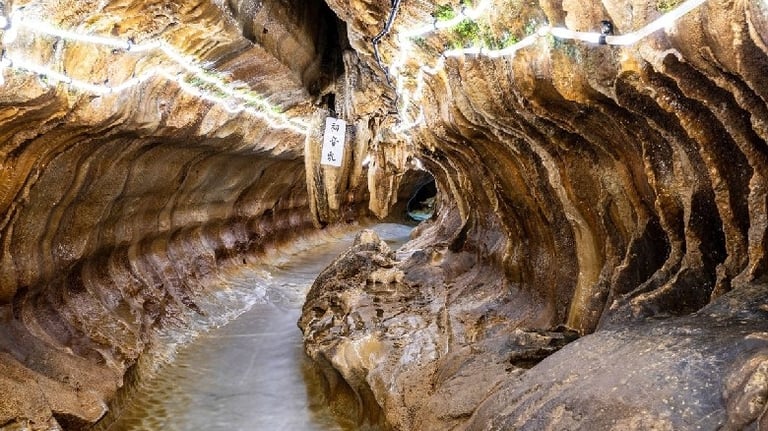

Kawachi Fujien
Kawachi Fujien, opened in 1977, is a beautiful garden located in Yahatahigashi Ward, Kitakyushu City, Fukuoka Prefecture, Japan, and is a popular spot visited by many tourists, especially in spring when the wisteria (Fuji) flowers are in full bloom. The garden has about 150 wisteria trees, and its magnificent arched wisteria trellises and cascading wisteria flowers are attracting attention in Japan and abroad as "a spectacular sight to see at least once in one's life.
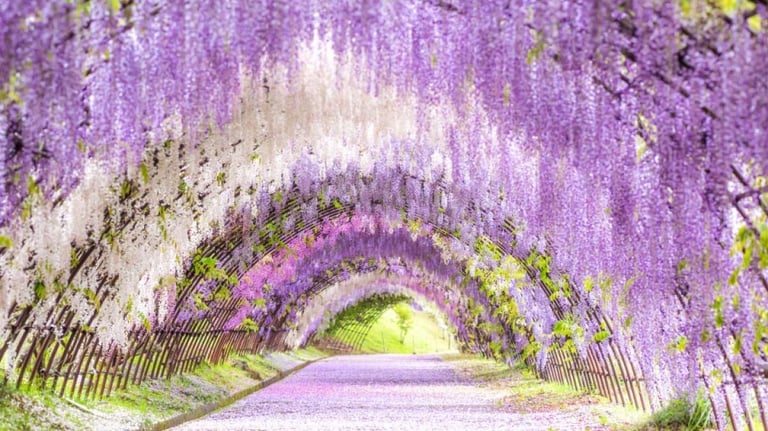

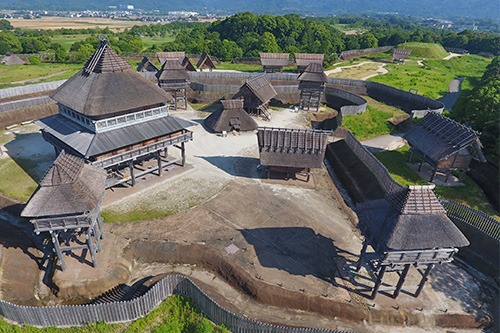

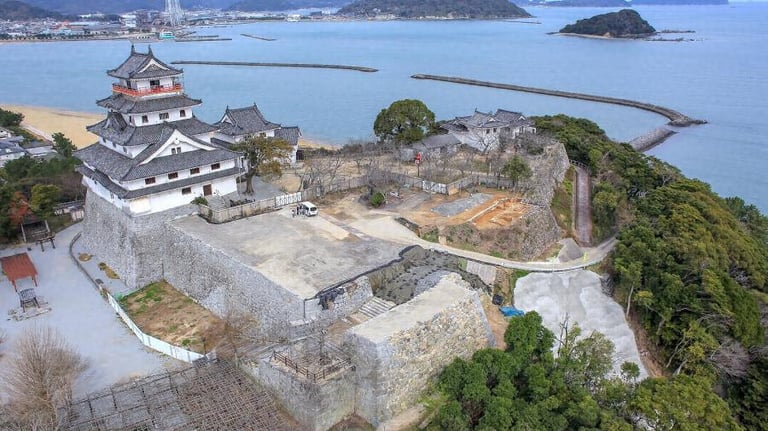

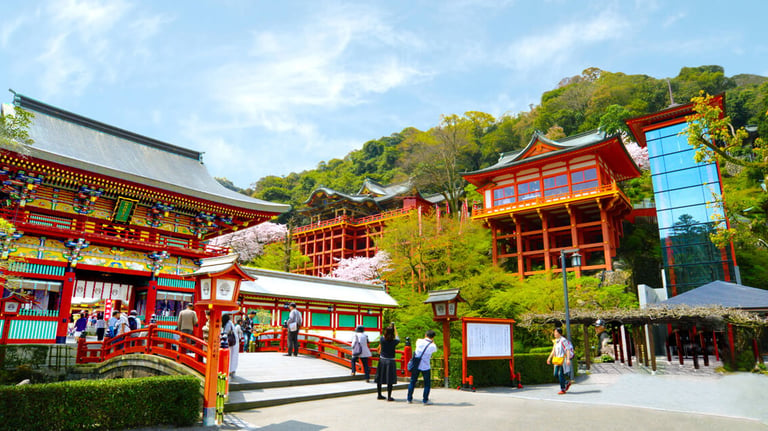

Saga Prefecture
Saga Prefecture is located in the northwestern part of Japan's Kyushu region, bordering Fukuoka and Nagasaki prefectures. The prefectural capital is Saga City. Saga is known as a relatively quiet tourist destination, with its historical heritage, rich natural environment, and unique culture. It is also famous for its traditional crafts such as Arita-yaki and Karatsu-yaki. Below are detailed descriptions of some of the major tourist attractions that you should definitely visit when visiting Saga Prefecture.
Yoshinogari Historical Park is a vast archaeological site that spans Kanzaki City and Yoshinogari Town in Saga Prefecture, Japan. It is known as the remains of a large moated settlement from the Yayoi period (3rd century BC to 3rd century AD). The site is one of the largest in Japan and is designated as a national "Special Historic Site." It has also been developed as a theme park that recreates the lives and culture of ancient people, making it a popular spot for many tourists and history fans.
Yoshinogari Historical Park
Karatsu Castle
Karatsu Castle, also known as Maizuru Castle, is a historic castle located in Karatsu City, Saga Prefecture, Japan. Built in 1602 by Hideyoshi Toyotomi's vassal, Hirotaka Terazawa, the castle features a beautiful view overlooking the Sea of Japan. It was restored in 1966, and there is a historical museum inside where you can learn about the history of Karatsu Castle and the surrounding area. At the time of its construction, the castle flourished as the center of the Karatsu Domain.
Yutoku Inari Shrine
Yutoku Inari Shrine is a historic shrine located in Kashima City, Saga Prefecture, Japan. It was founded in 1687 and has been attracting faith from people for over 300 years since then. It is a historic site that is counted as one of the "Three Great Inari Shrines of Japan." It is praised alongside Fushimi Inari Taisha in Kyoto and Kasama Inari Shrine in Ibaraki, and is said to bring blessings such as business prosperity, bountiful harvests, and household safety. Its beautiful architecture and solemn atmosphere make it a popular spot visited by many worshippers and tourists.
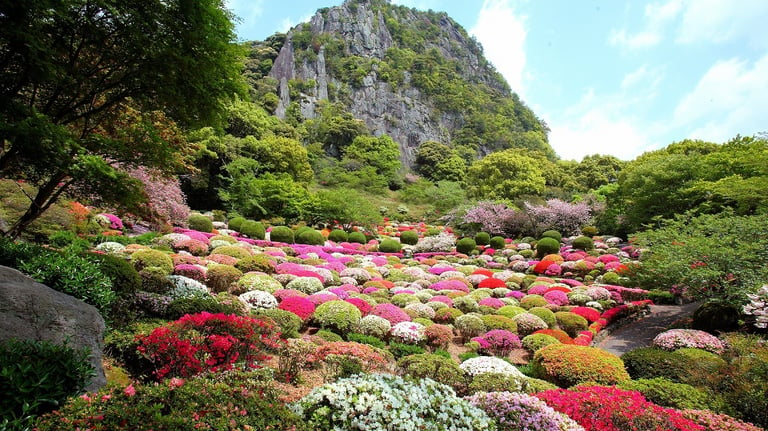

Mifuneyama Rakuen
Mifuneyama Rakuen is a vast Japanese garden in Takeo City, Saga Prefecture, Japan, and is a tourist spot where you can enjoy beautiful natural scenery and seasonal scenes. The garden spreads over an area of approximately 500,000 square meters and is known as a historic garden built in the late Edo period. Many tourists visit the garden to enjoy the magnificent views, especially during the cherry blossom season in spring and the autumn leaves in autumn.
Niji no matsubara
Niji-no-Matsubara is a beautiful pine forest located in Karatsu City, Saga Prefecture, Japan, and is one of the “Three Great Pine Plains of Japan” as a natural scenic spot. The pine forest, which stretches about 5 kilometers in length, attracts many tourists because of its size and beauty, and is popular as a walking, jogging, and driving course. The harmony of the pine forest with Karatsu Bay stretching behind it is known as a spectacular sight.
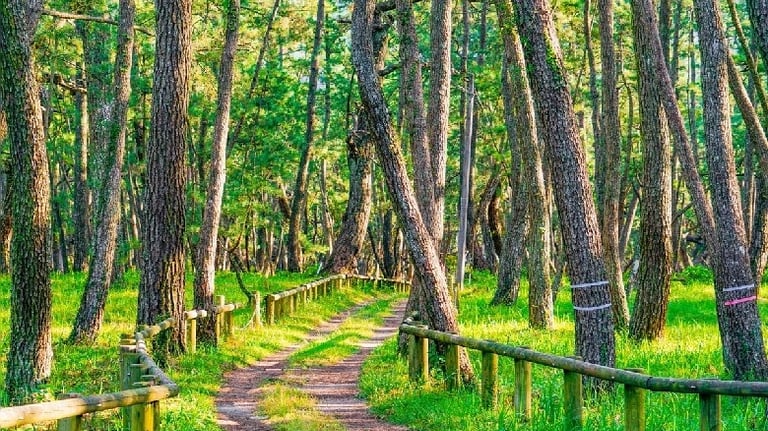

Kiyomizu Falls is a waterfall in Ogi City, Saga Prefecture, Japan, and is characterized by its beautiful scenery and clear water. It is a beautiful waterfall with a drop of about 20 meters, and has been selected as one of the "100 Best Waterfalls in Japan," and is loved by many tourists and locals. The water from the waterfall is very pure and is popular among locals as natural drinkable water. Many tourists bottle it and take it home with them.
Kiyomizu Falls
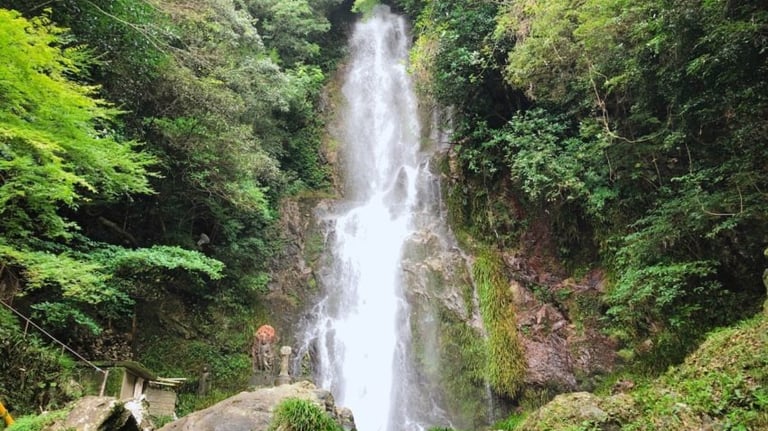

Nanatsugama
Nanatsugama is a natural scenic spot along the coast in Karatsu City, Saga Prefecture, Japan. It is a group of caves formed in the cliffs facing the Genkai Sea. This cave complex is called Nanatsugama because of its distinctive topography, which, as the name implies, consists of a series of seven large cavern-shaped caves. Designated as a national natural monument, the caves have long been known to fishermen, but in recent years they have become a tourist attraction that attracts many visitors. Visitors can enjoy the beautiful scenery from a sightseeing boat or from the observatory.
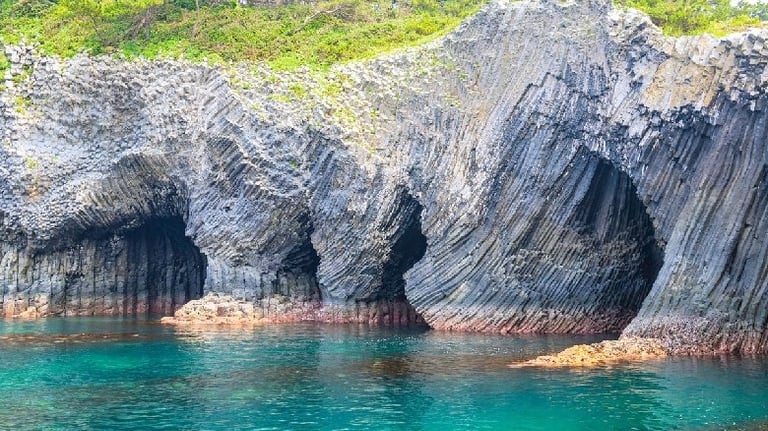

Saga Ganzo Ninja Village
Saga Ninja Village is a unique theme park in Ureshino, Saga Prefecture, Japan, located in the area said to be the birthplace of ninja culture in Japan. It is a tourist spot where you can experience ninja culture. At this facility, you can experience the real world of ninjas through activities such as wearing authentic ninja costumes, throwing shuriken, and ninja training. There are plenty of attractions that can be enjoyed by both children and adults, making it popular with families and group trips.
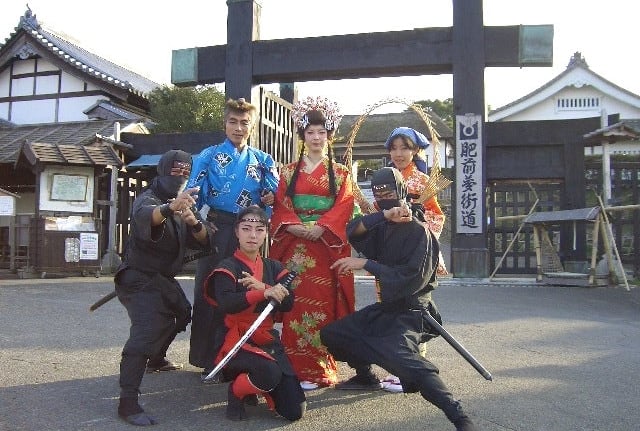

Hamanoura no Tanada
Hamanoura no Tanada (terraced rice fields) are beautiful terraced rice fields in Genkai, Saga Prefecture, Japan, and are located on a hilly terrain facing the Sea of Japan. These terraced paddy fields consist of about 280 small rice paddies, spread out like terraced fields on a gently sloping hillside. Selected as one of the “100 best terraced rice paddies in Japan,” the beauty of the curving lines of the terraced fields and the seasonal changes in the scenery attract many tourists. Especially at sunset, the scenery of the terraced rice fields and the sea is very romantic.
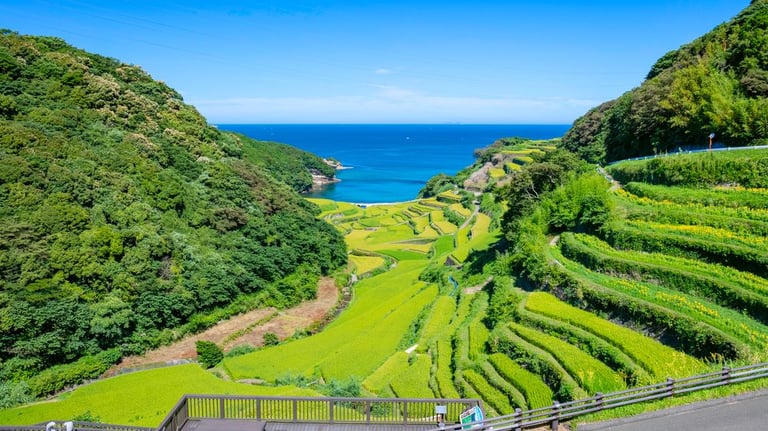

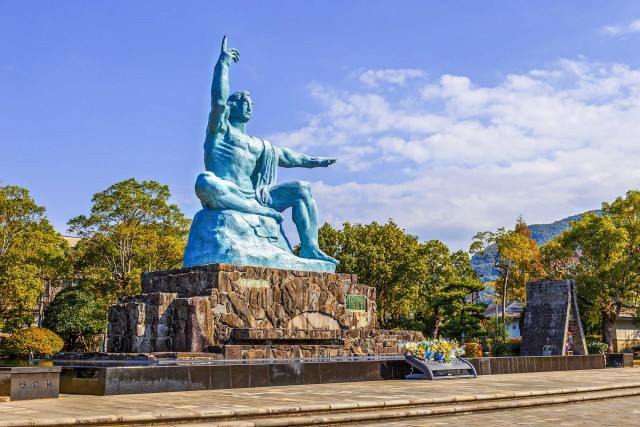

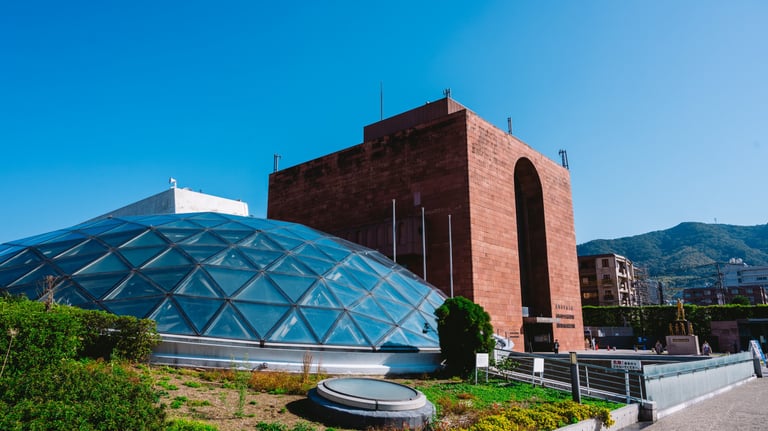

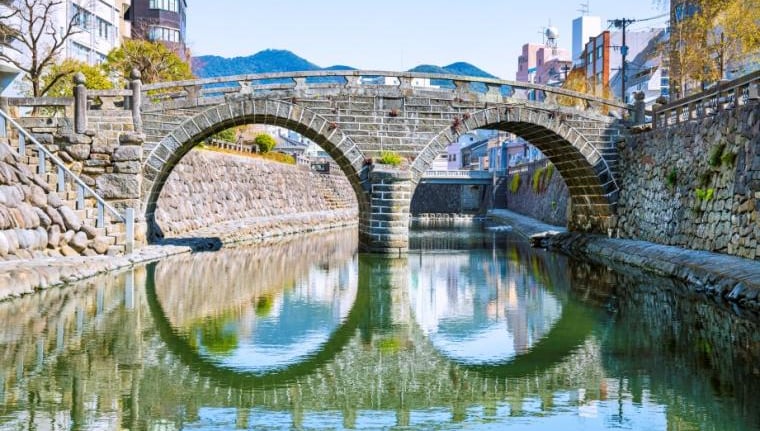

Nagasaki Prefecture
Nagasaki Prefecture is located in the northwest of Kyushu, Japan, and is characterized by its geographical location surrounded by the sea. The prefectural capital is Nagasaki City, and due to its historically active exchange with the outside world, the city has retained its exotic streetscapes and culture. It is also the site where the atomic bomb was dropped during World War II, and many people visit the city to convey their prayers for peace. Below is some useful information for tourists visiting Nagasaki Prefecture.
Peace Park and Peace Statue is a large park in Nagasaki, Japan, designed as a memorial to the victims of the atomic bomb dropped on August 9, 1945 during World War II and to renew the pledge for peace. The park's symbol, the “Peace Statue,” is a world-renowned sculpture and an important tourist attraction that many people visit as a memorial to the victims and a reminder of their commitment to peace. Every year on August 9, the “Nagasaki Peace Memorial Ceremony for the Victims of the Atomic Bomb” is held and is attended by many people from Japan and abroad.
Peace Memorial Statue
Atomic Bomb Museum
Nagasaki Atomic Bomb Museum is located in Nagasaki City, Nagasaki Prefecture, Japan. The museum emphasizes the importance of peace through documents and exhibits that show the damage caused by the atomic bomb dropped on August 9, 1945. The museum plays an educational and enlightening role in the abolition of nuclear weapons and the realization of lasting peace, and attracts many visitors from Japan and abroad. The museum opened in 1996, and when the International Campaign to Abolish Nuclear Weapons (ICAN) was awarded the Nobel Peace Prize in 2017, Nagasaki Peace Memorial Museum also received much attention.
Meganebashi
Megane-bashi Bridge was built in 1634 by a Chinese Buddhist monk named Ryojong. It is known as one of the oldest stone arch bridges in Japan. The bridge is approximately 22 meters long and 3.65 meters wide, and is characterized by its piled granite structure. Located in Nagasaki City, Nagasaki Prefecture, Japan, this historic stone bridge is designated as a National Important Cultural Property. The bridge was so named because the shadows on the water and the main body of the bridge resemble "glasses. It is a popular and beautiful sightseeing spot in Nagasaki that attracts many tourists.
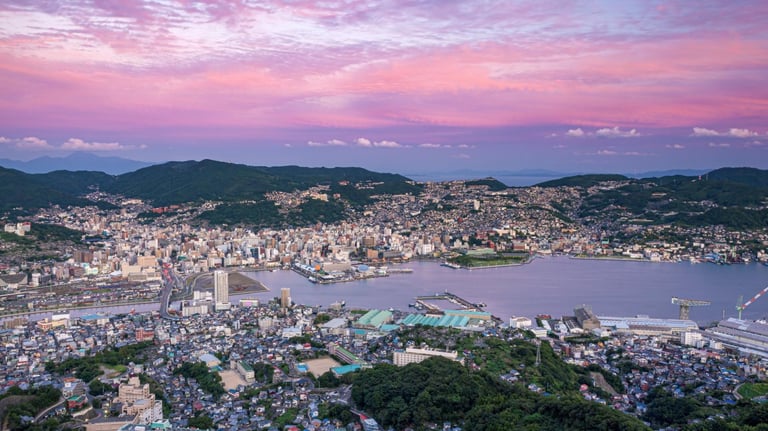

Mount Inasa
Mount Inasa is a 333-meter-high mountain in Nagasaki City, Nagasaki Prefecture, Japan. It is a symbol of Nagasaki City, and the view from the summit is its greatest attraction. It is known as a scenic spot where you can see the cityscape of Nagasaki City, its beautiful harbor, and the evening scenery from the top. The night view in particular is counted as one of the "Three Great Night Views of Japan," and is known as the "10-million-dollar night view." Its beauty and romantic atmosphere make it popular with couples and tourists.
Iojima
Iojima is an isolated island in Nagasaki City, Nagasaki Prefecture, Japan, known as a resort destination where you can enjoy beautiful natural scenery and hot springs. The island is located about 17 kilometers from Nagasaki Port and can be easily accessed by car or ferry, making it a popular destination for day trips and overnight stays. Although it is a small island with a circumference of about 12 kilometers, it is an attractive place that combines rich nature with resort facilities. In particular, "Iojima Onsen" and "Sunset Beach" are popular spots with tourists.
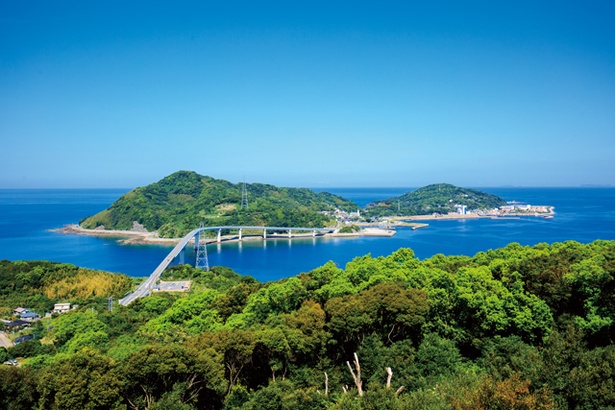

Gunkanjima, officially known as Hashima, is a small uninhabited island belonging to Nagasaki City, Nagasaki Prefecture, Japan, and has a history of prosperity as an undersea coal mining site. From the Meiji period to the mid-Showa period, it developed into one of the largest undersea coal mines in Japan. Today, the group of abandoned buildings creates a unique landscape, and in 2015 it was registered as a UNESCO World Heritage Site as an "industrial heritage site." It is widely known by the nickname "Gunkanjima" (Battleship Island) due to its appearance resembling a battleship.
Gunkanjima
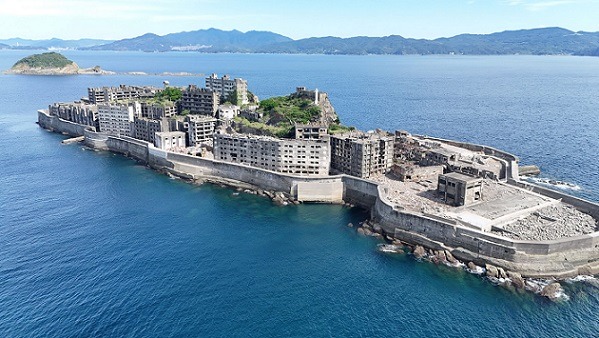

Tsukumojima
Tsukumojima is a beautiful archipelago in Sasebo City, Nagasaki Prefecture, Japan, and a scenic spot dotted with countless islands of all sizes. Its name means “very many islands,” and in fact there are as many as 208 islands, only four of which are inhabited. The Tsukumojima Islands are designated by the national government as “special scenic spots” and “national parks,” and are a popular destination for tourists and nature lovers. Visitors can tour the islands by ocean cruise boat or kayak, and enjoy the scenery of the four seasons.
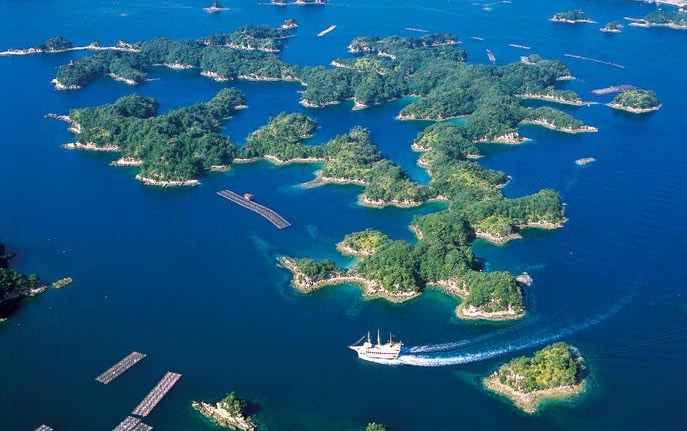

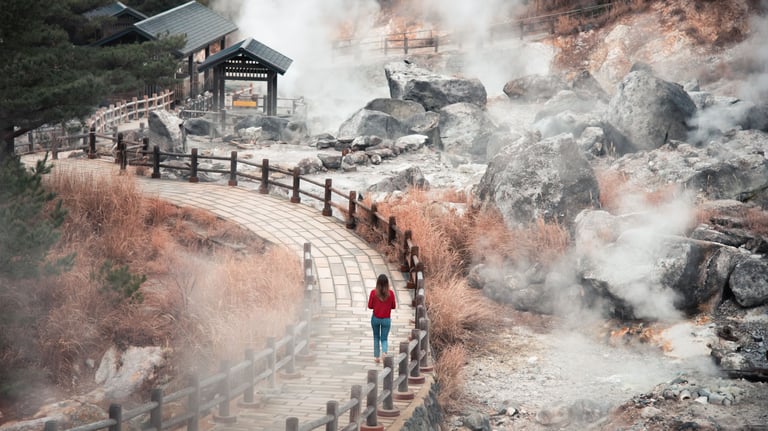

Unzen Jigoku is a volcanic area in Unzen City, Nagasaki Prefecture, Japan, and is a tourist spot characterized by its unique scenery and sulfurous smell. Located at the foot of Mount Unzen Fugen, it attracts many visitors along with the "Unzen Hot Springs." The name "Jigoku" (hell) comes from the fact that the rising steam and sulfurous vapor resembles a cauldron of hell. During the Edo period, it was also known as a place for the oppression of Christians, and many martyrs lost their lives here. In 1983, the "Heisei Great Eruption" occurred, and activity at Mount Unzen Fugen increased. It is currently in a relatively stable state, but traces of volcanic activity remain everywhere.
Unzen Jigoku
Shimabara Castle
Shimabara Castle is a historic castle that was built in 1618 and completed by the first feudal lord, Matsukura Shigemasa. It is also known as Moritake Castle. This castle was built in the early Edo period, and now the castle tower and stone walls have been restored, making it a popular tourist spot that attracts many people. It is also known as the site of the Shimabara Rebellion that took place in 1637, making it an important place for history fans. The castle tower, turrets, stone walls, etc. have been restored, and a historical museum has been set up inside. There are a wide variety of exhibits related to the Shimabara Rebellion and the oppression of Christians.
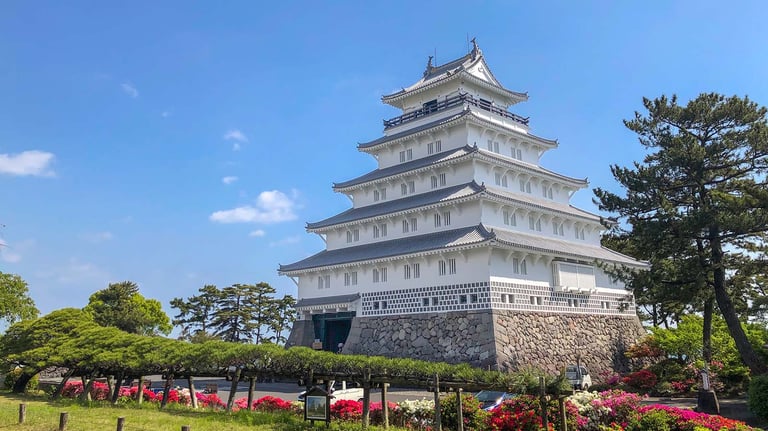

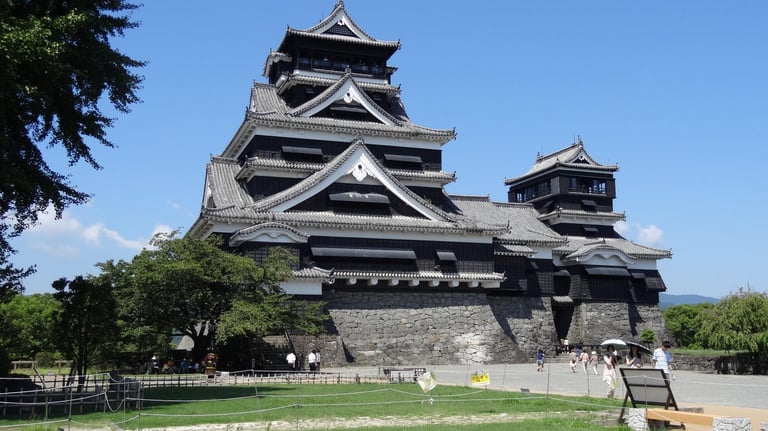

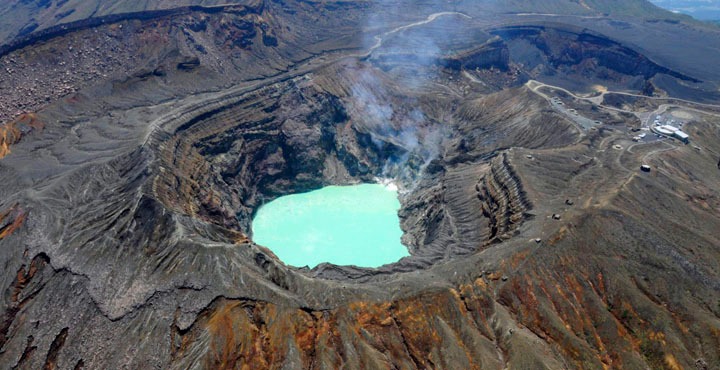

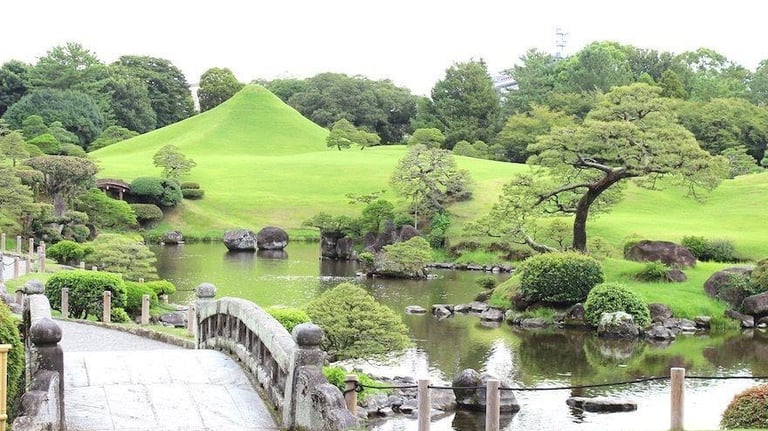

Kumamoto Prefecture
Kumamoto Prefecture is located in the center of Kyushu, Japan, and is an attractive prefecture with rich nature, historical heritage, and unique culture. The prefectural capital is Kumamoto City, and since the 2016 Kumamoto earthquake, the prefecture has been recovering and is once again attracting attention as a tourist destination. There are also many scenic spots and hot springs, such as Mount Aso and Kurokawa Onsen, which are popular among tourists from both Japan and abroad. Below is some useful information for tourists visiting Kumamoto Prefecture.
Kumamoto Castle is one of the “Three Great Castles of Japan” and a nationally famous tourist attraction. It is characterized by its solid stone walls and magnificent castle tower, and is so well defended that it is called "the castle of impregnability. Even today, it still attracts many tourists and is a symbol of Kumamoto. Kumamoto Castle was built by Kiyomasa Kato in 1607, and the Hosokawa clan subsequently served as the castle's lord for over 300 years; although parts of the castle were damaged in the 2016 Kumamoto earthquake, restoration work is still underway and many parts of the castle are still open to the public.
Kumamoto Castle
Mount Aso
Mount Aso is an active volcano that spans Aso City, Minamiaso Village, and Oguni Town in Kumamoto Prefecture, Japan, and is known as a mountain with one of the world's largest calderas. It is characterized by its magnificent natural scenery and dynamic volcanic activity, and is a popular spot visited by many tourists from both Japan and abroad. Mount Aso is made up of several mountains known as the "Five Peaks of Aso," and the crater of Nakadake in particular is a rare place where you can see it up close. Of the "Five Peaks of Aso" (Takadake, Nakadake, Nekodake, Eboshidake, and Kishimadake), Nakadake continues to have active volcanic activity even today, and you can visit its crater.
Suizenji jojuen
Suizenji jojuen is a historical Japanese garden located in Kumamoto City, Kumamoto Prefecture, Japan. It is a feudal lord's garden built by the Hosokawa clan in the Edo period. This garden is also called “Seishuen” and is designated as a national place of scenic beauty. The garden is a large, spacious area with a beautiful pond garden, inviting visitors into a world of elegant Japanese style. The garden has a pond and a hill that utilize spring water, and the borrowed scenery of Mt. The garden was first constructed around 1636, and was renovated several times before taking its present form.
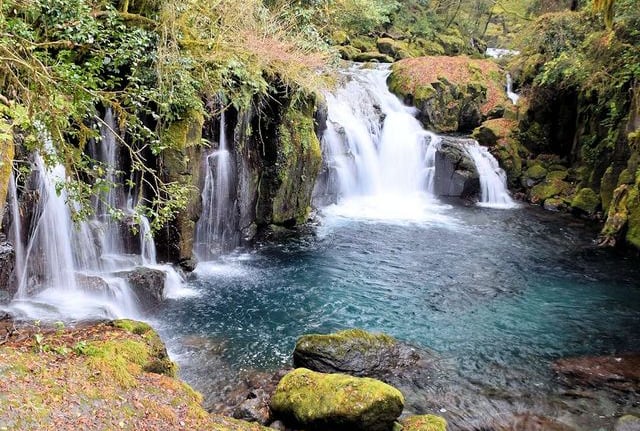

Kikuchi Valley
Kikuchi-Keikoku is a nature-rich valley located in Kikuchi City, Kumamoto Prefecture, Japan, and is a tourist destination with beautiful clear streams and deep green forests. Especially during the fall foliage season, many tourists visit the valley to enjoy the spectacular scenery. It is also known as a place where hiking and walking can be enjoyed throughout the year, and is popular among families and nature lovers.
Nabegataki Falls
Nabigataki Falls is a beautiful waterfall located in Oguni Town, Aso District, Kumamoto Prefecture, Japan, and is also known as “Urami no Taki” because of its unique scenery. The ability to walk behind the falls and the harmony of the surrounding nature attracts many tourists. It is also often used as a filming location for movies and commercials, and is especially noted for its fantastic atmosphere.
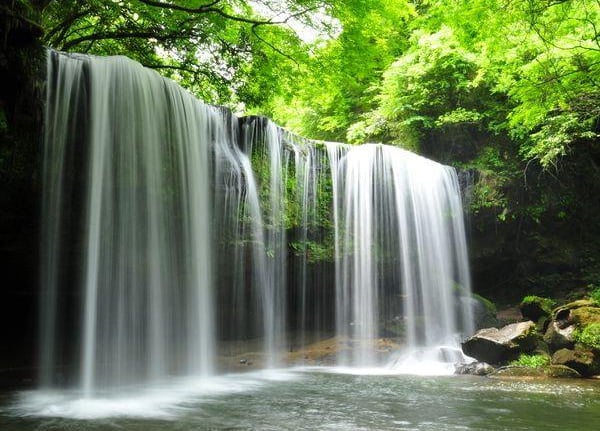

Tsujun Bridge is a historic stone arch bridge located in Yamato Town, Kamimashiki District, Kumamoto Prefecture, Japan, known as an aqueduct bridge built during the Edo period. The bridge is counted as one of the "Three Great Aqueduct Bridges of Japan," and attracts many tourists with its magnificent structure and beautiful scenery. It is also recognized as a "civil engineering heritage," and is an important symbol for the local people.
Tsujun Bridge
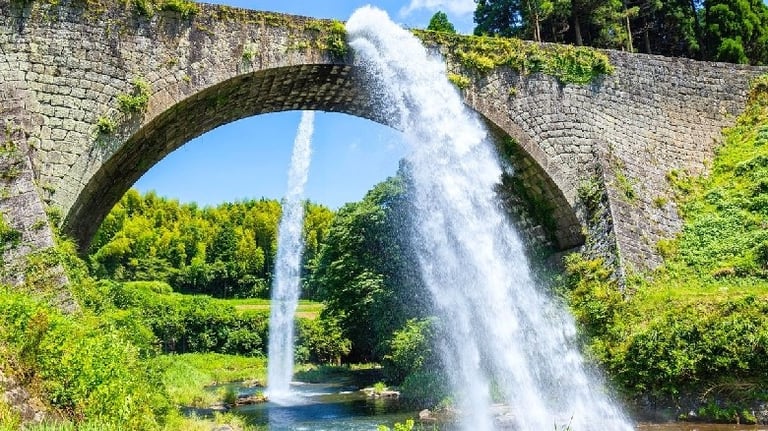

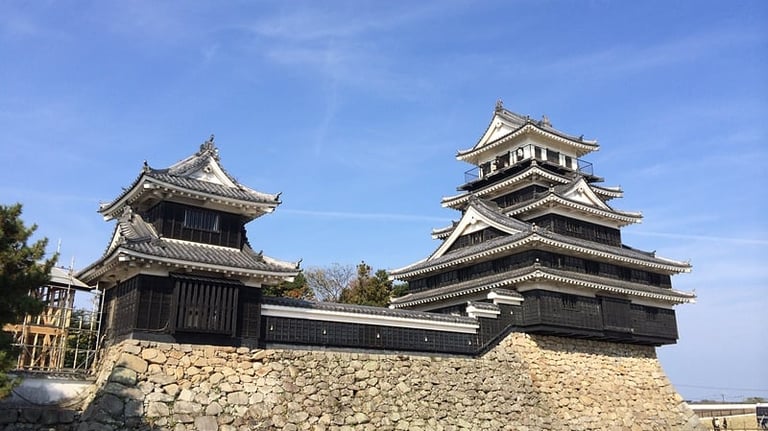

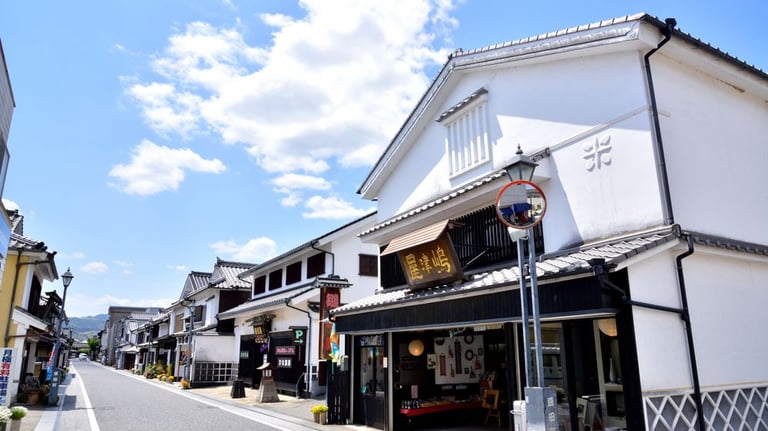

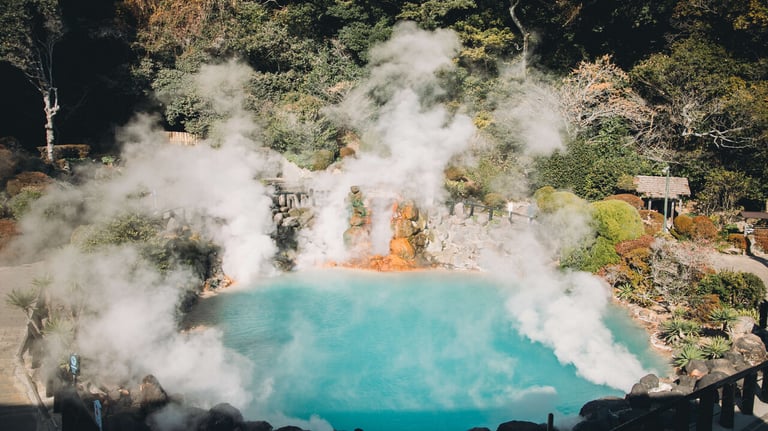

Oita Prefecture
Oita Prefecture is located in the eastern part of Japan's Kyushu region and is known throughout the country as a "hot spring prefecture. The prefectural capital is Oita City, and its many hot spring resorts, such as Beppu Onsen and Yufuin Onsen, which boast the largest hot spring output in Japan, are popular among tourists. In addition, the rich natural environment and historical heritage of the prefecture are attractive to many travelers from Japan and abroad. Below is some useful information for tourists visiting Oita Prefecture.
Nakatsu Castle is a historic castle in Nakatsu City, Oita Prefecture, Japan, and is known as the "Sea Castle." Built facing the Bungo Channel, the castle served as an important base from the Sengoku period to the Edo period. Although there are few remaining castle towers and turrets, the castle attracts many tourists due to its beautiful scenery and historical value. The current castle tower was rebuilt in 1965, but the stone walls and moats are remnants of the original structure and have been designated as a national historic site.
Nakatsu Castle
Mameda Town
Mameda-cho (Mameda Town) is a historical town in Hita City, Oita Prefecture, Japan, and is a beautiful area also known as "Kyushu's Little Kyoto. The merchant houses and storehouses that flourished from the Edo to Meiji periods remain intact, allowing visitors to enjoy a nostalgic atmosphere. It is also a popular destination for many tourists, with many sightseeing spots and special products. The area is designated as a national Important Preservation District for Groups of Traditional Buildings, and is characterized by its rows of white-walled storehouses and houses with lattice doors.
Beppu Hell Tour
Beppu Jigoku Meguri (Beppu Hell Tour) is a tourist attraction located in Beppu City, Oita Prefecture, Japan, and is a symbol of Beppu, a famous hot spring resort. The “jigoku” refers to the hot springs and colorful hot spring pools that erupt at high temperatures, attracting many tourists with their powerful scenery and unique atmosphere. Currently, eight “hells” have been established as tourist attractions, each with different characteristics. Each hell has its own unique spring quality and scenery, and some of them have zoos and gardens attached to them.
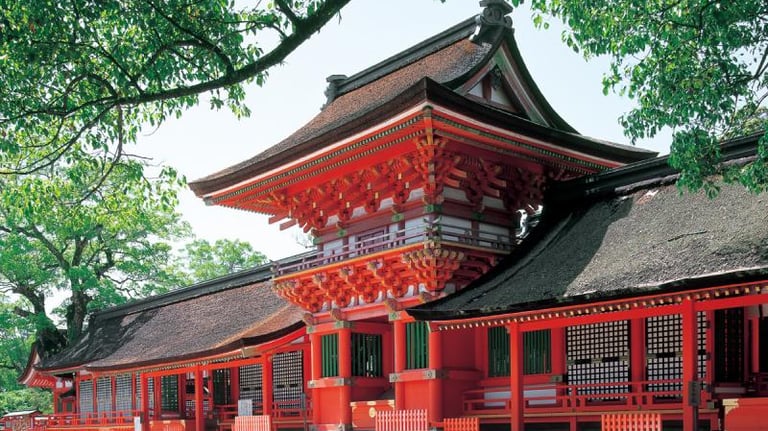

Usa Shrine
Usa Jingu (Usa Shrine) is a historical shrine located in Usa City, Oita Prefecture, Japan, and is known as the head shrine of the 40,000 “Hachimangu” shrines throughout Japan. It is considered one of the oldest shrines in Japan and has long been revered by the imperial family, the warrior class, and the general populace. Known as the “general guardian of Japan,” it is an important shrine that enshrines the 8 million gods and goddesses of the land. The shrine's majestic pavilions, vast grounds, and deep historical background make it a sacred place that attracts many worshippers.
Dream Suspension Bridge
Kokonoe "Yume" Otsuribashi is the tallest pedestrian-only suspension bridge in Japan, located in Kokonoe Town, Kusu District, Oita Prefecture, Japan, with a total length of 390 meters and a height of 173 meters (above the water surface). It is surrounded by abundant nature, making it a popular tourist spot where you can enjoy beautiful scenery throughout the seasons. It is loved by many people, including couples, families, and photography enthusiasts, as a place where you can refresh yourself in the magnificent valleys, waterfalls, and clear air.
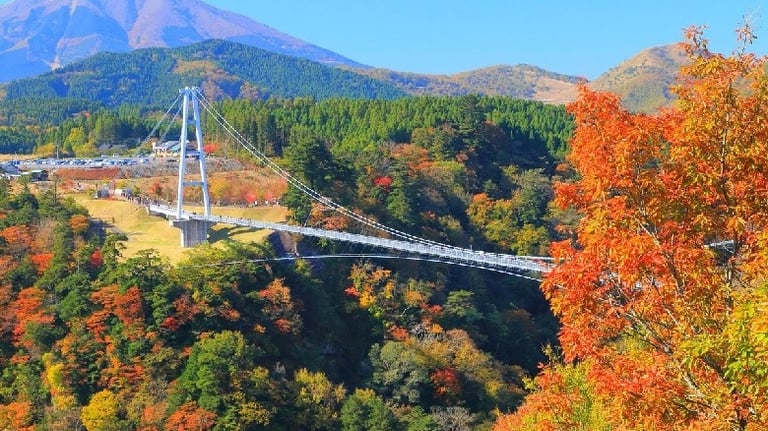

Yufudake is a beautiful 1,583-meter-high mountain in Oita Prefecture, Japan, and is also known as “Bungofuji,” . Its graceful conical shape and the surrounding rich nature are in harmony, attracting many climbers and tourists. It is also known as the symbol of Yufuin Onsen, a famous hot spring resort, and shows different faces throughout the four seasons. Yufudake is a stratovolcano formed by volcanic activity and still exists as a dormant volcano. It has long been revered as a "mountain of faith.
Yufudake
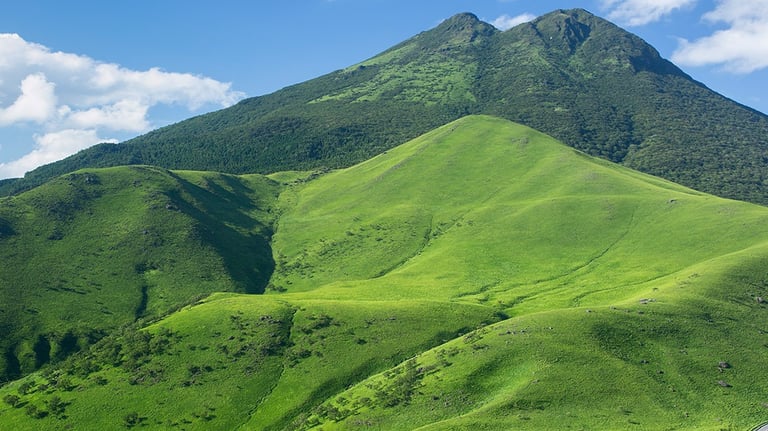

Kuju Plateau
The Kuju Plateau is a plateau located on the border between Kumamoto and Oita prefectures in the Kyushu region of Japan, and is part of Aso-Kuju National Park. It is known as a resort area with vast natural scenery, a rich ecosystem, and a variety of activities. The Kuju Plateau spreads out at the foot of the Kuju Mountains, and is located at an altitude of about 800 to 1,000 meters. The climate is cool, making it comfortable even in summer. It is surrounded by grasslands, forests, and volcanic terrain, and the most impressive mountains are Mt. Kuju (1,792m above sea level) and Mt. Mimata.
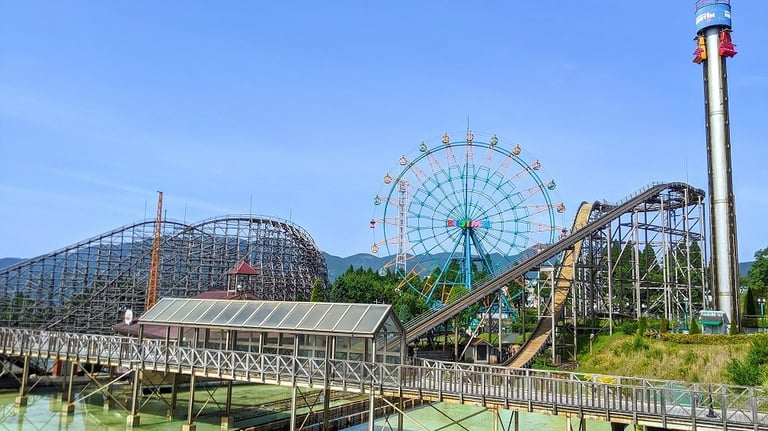

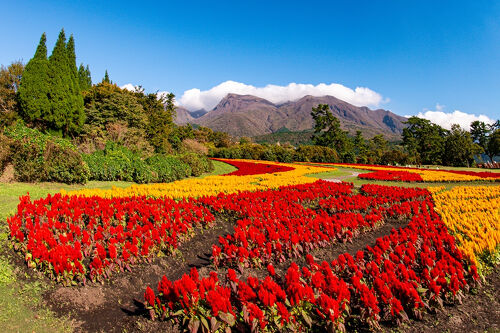

Kijima Kogen Park is a theme park located in Beppu City, Oita Prefecture and is a popular tourist spot for families and couples. Located in a highland area rich in nature, the park is known for its attractions, activities, and beautiful scenery. It is also noted as a place where one can view the "best starry sky in Japan. It is located on a plateau about 600 meters above sea level, surrounded by lush green mountains.
Kijima Kogen Park
African Safari
This unique zoo is located in Usa City, Oita Prefecture, Japan, and is also known as "Kyushu Shizen Zoological Park. This facility uses a “safari park” format, where wild animals live freely on a vast expanse of land, and visitors can observe them as they move among the animals by car or bus. It is also extremely popular among families and animal lovers because visitors can interact with many animals in an environment that replicates the grasslands of Africa.
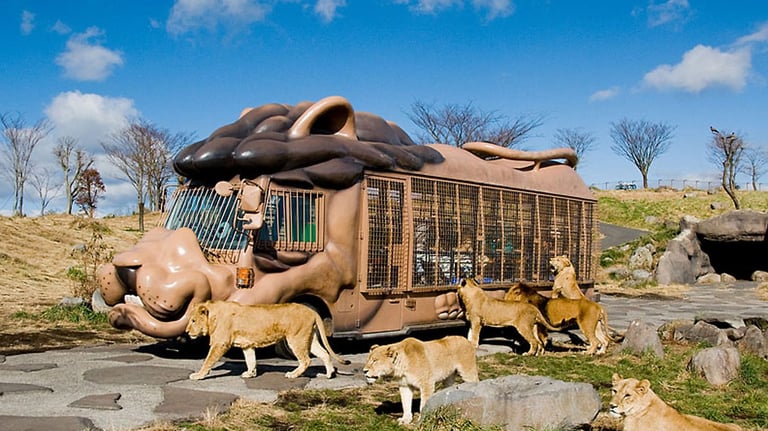

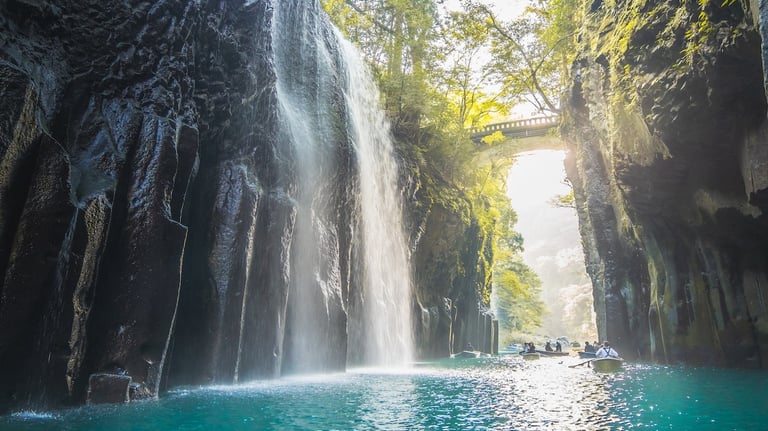


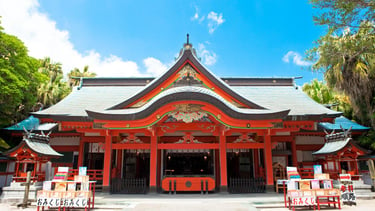
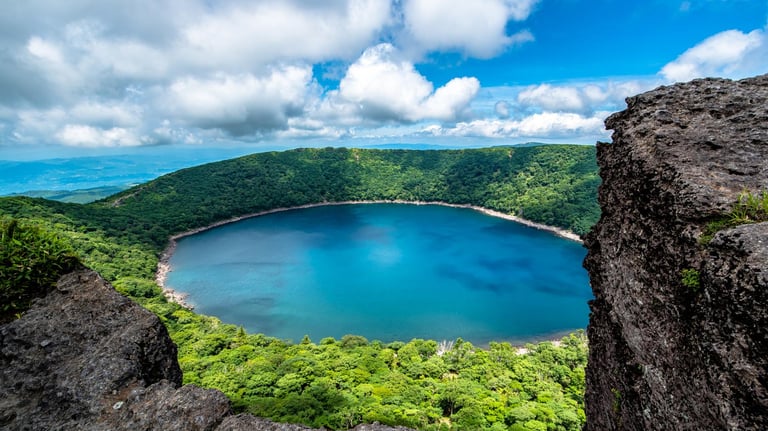

Miyazaki Prefecture
Miyazaki Prefecture is located in the southern part of Kyushu, Japan, and is characterized by a warm climate and abundant nature. It is also known as "Hyuga" (sunny place), and has many sunny days throughout the year, making it a popular tourist destination. Below, we will introduce some useful information for tourists visiting Miyazaki Prefecture.
Takachiho Gorge is a beautiful gorge in Takachiho Town, located in the northern part of Miyazaki Prefecture, and is one of the most scenic natural spots in Japan. It is characterized by cliffs and oddly shaped rocks carved by the Gokase River, and the black basalt cliffs with columnar joints are particularly breathtaking. The area is also deeply related to Japanese mythology, and is said to be the setting of the legend of Amaterasu's descent to earth.
Takachiho Gorge
Aoshima Shrine
Aoshima Shrine is a shrine located on Aoshima, an island floating in the beautiful sea in Nichinan City, Miyazaki Prefecture. Due to its distinctive scenery and mystical atmosphere, it is a popular spot visited by many tourists and worshippers. The entire island is regarded as sacred, and it is said to bring good fortune in areas such as safety at sea, matchmaking, and safe childbirth.
Ebino Highlands
Ebino Highlands is a plateau about 1,000 meters above sea level that straddles the cities of Ebino and Kirishima in Miyazaki Prefecture. It is known for its abundant nature and beautiful scenery. Visitors can enjoy a variety of activities such as hiking, driving, and camping on the plateau, which shows different faces in each of the four seasons.
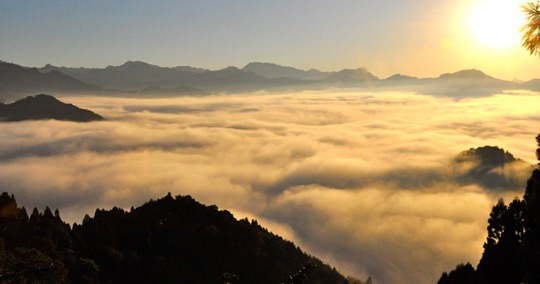

Kunimigaoka
Kunimigaoka is a small hill about 513 meters above sea level in Takachiho Town, Miyazaki Prefecture, and as its name suggests, it is known as a place from which you can see the whole country (region). From this hill, you can see the surrounding mountains and plains, and even the Pacific Ocean in the distance, and it is especially famous for its beautiful sunsets. It is not only a tourist destination, but also a place of relaxation that is loved by locals.
Oomi Shrine
Omijinja Shrine is a historic shrine located in Hyuga City, Miyazaki Prefecture, and has long been revered as the main shrine of Hyuga. This shrine plays an important role in Japanese mythology and history, and is particularly closely connected to the legend of Amaterasu's descent from heaven to earth. Due to its magnificent scenery and miraculous power, it is a popular power spot that draws many worshippers.
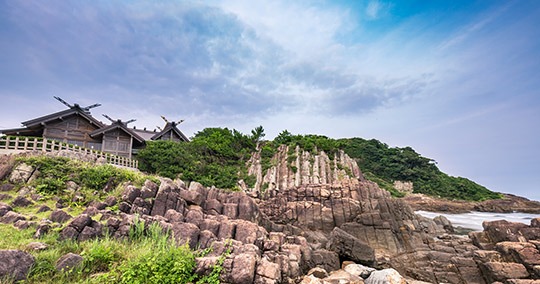

The cliffs of Umagase are a spectacular natural landscape in the Kirishima mountain range, located on the border between Nobeoka and Hyuga cities in Miyazaki Prefecture. This area is known as one of Miyazaki's most representative natural spots, along with Kumagatake and Takachiho Gorge. The name Umagase comes from the fact that the terrain curves like a horse's back, and the impressive scenery captivates all who visit.
Umagase Cliffs
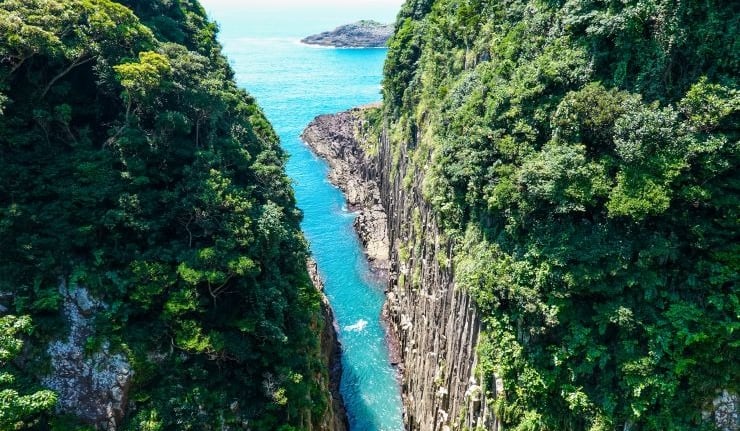

Udo Shrine
Udo Shrine is a magnificent shrine built on the seaside in Nichinan City, Miyazaki Prefecture, and is known as Japan's "Shrine of the Sea." The shrine is characterized by its main hall, which is located inside a cliff, and the natural scenery that surrounds it. It is a popular power spot that is visited by many worshippers, as it is said to bring good luck in safe childbirth and prayers for fertility. At Udo Shrine, you can experience the traditional ritual of "Undama Throwing."
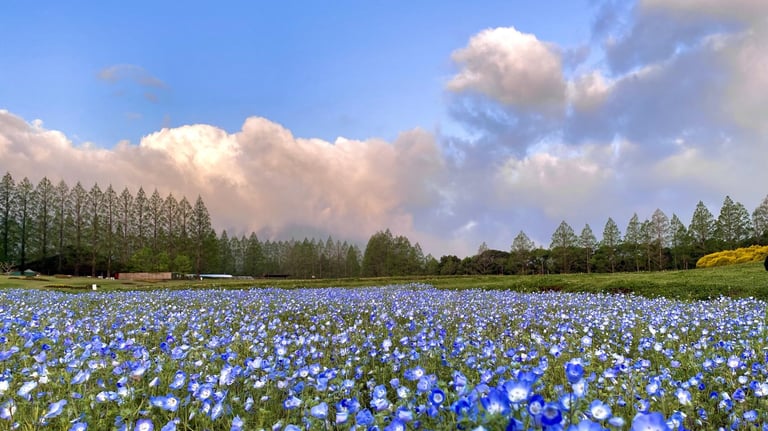

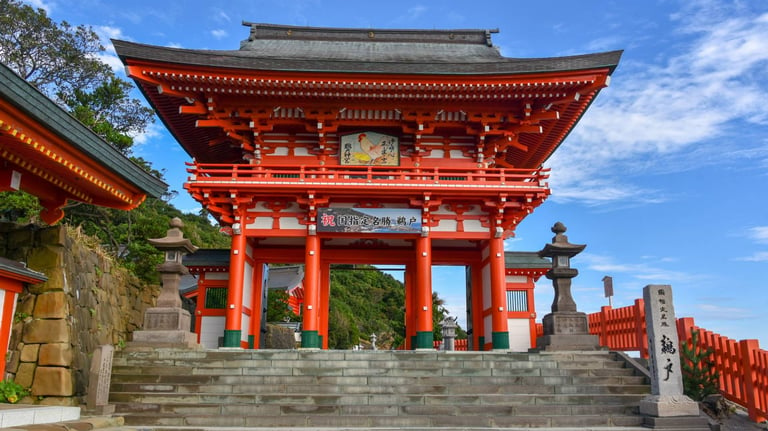

Ikoma Plateau is a highland area of beautiful natural scenery located in the northern part of Miyazaki Prefecture, with lush greenery and a cool climate. The area is known as a place where visitors can enjoy various outdoor activities such as hiking, camping, and barbecuing. It is a popular destination for many tourists, especially during the spring and fall seasons.
Ikoma Plateau
Florante Miyazaki
Florante Miyazaki is a beautiful flower theme park in Miyakonojo City, Miyazaki Prefecture, and a tourist spot where you can enjoy a variety of flowers throughout the four seasons. The vast park is equipped with various flower beds and greenhouses, enveloping visitors in vibrant colors. It is especially popular with families, couples, and photography enthusiasts, and is visited by many tourists throughout the year.
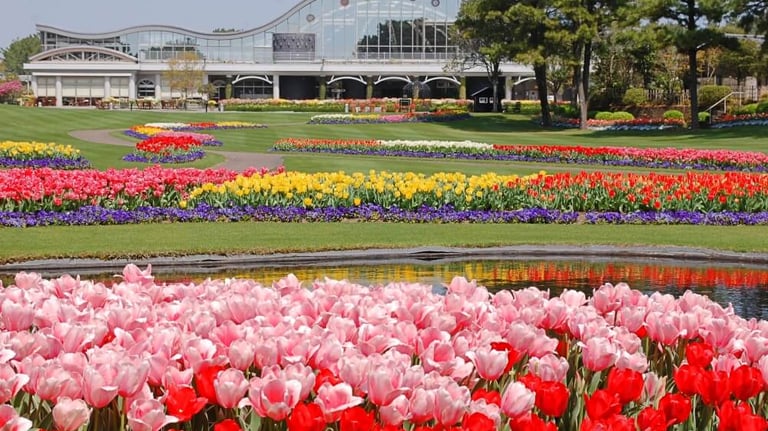

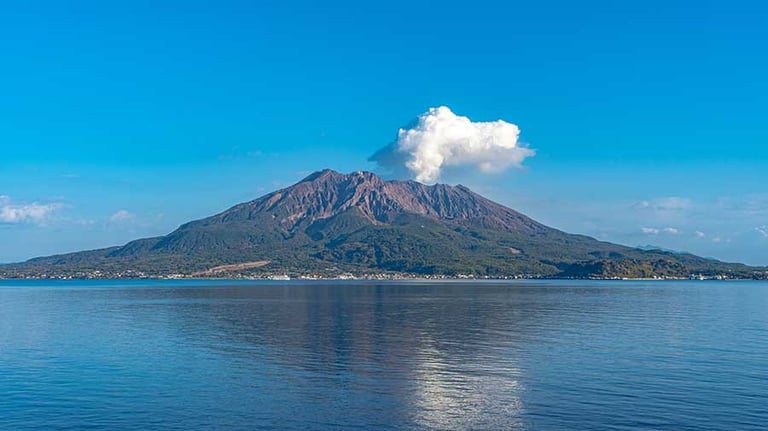

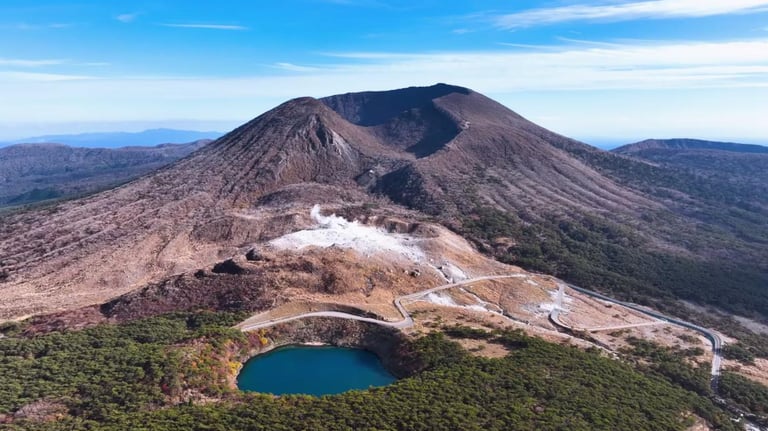

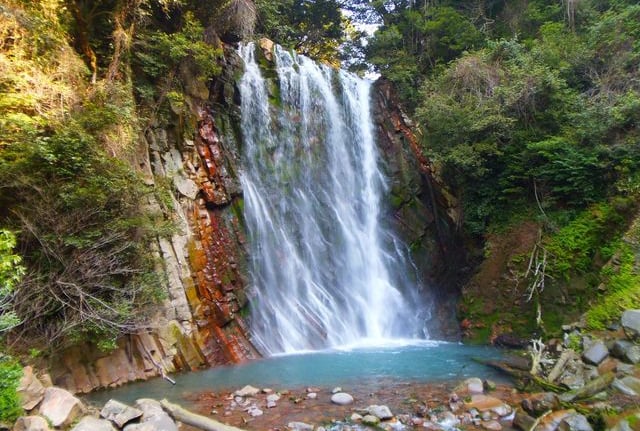

Kagoshima Prefecture
Kagoshima Prefecture is located at the southern tip of the Kyushu region and has a vast area that includes the Satsuma and Osumi Peninsulas. It also includes the Amami Islands and remote islands such as Tanegashima and Yakujima, which offer rich natural scenery and many historical sites. Below is some useful information for tourists visiting Kagoshima Prefecture.
Sakurajima is an active volcano in Kagoshima Bay and one of Japan's most famous natural scenic spots. It is easily accessible from Miyazaki Prefecture, and sightseeing plans combining it with the Kirishima Mountain Range and Takachiho Gorge are particularly popular. The island is known as an active volcano that continues to erupt even today, despite its beautiful mountain shape, which has been called “Japan's Fuji”. Its dynamic natural phenomena and spectacular scenery overwhelm visitors.
Sakurajima
Mount Kirishima
Mount Kirishima is a volcanic group that straddles Miyazaki and Kagoshima prefectures and is counted among Japan's 100 most famous mountains. This area refers to the Kirishima mountain range, which is made up of multiple volcanoes including Mount Kumagatake, and is attractive for its magnificent natural scenery and rich hot spring areas. In particular, the Miyazaki side is home to Ebino Plateau and Lake Ikeda, which are popular hiking and driving spots.
Maruo Falls
Maruo Falls, 23m high and 16m wide, is a rare hot spring waterfall where hot spring water from upstream Hayashida, Sakaenoo, Iodani, and Myoban hot springs gather and flow down. The magnificent Maruo Falls' spray shines against the autumn leaves in autumn, and in winter, steam rises from the hot springs. At night, the water is lit up, illuminating the milky blue color of the water that is unique to hot springs, creating a truly fantastical scene.
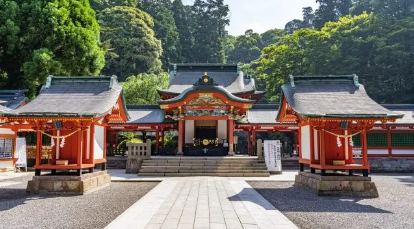

Kirishima Jingu
Kirishima Jingu is a historic shrine located in Kirishima City, Kagoshima Prefecture, and is known as one of Japan's leading power spots. The shrine is dedicated to Sugawara Michizane, the god of learning, and is especially popular among students preparing for entrance exams and those praying for academic success.
Ogawa Falls
Ogawa Falls is a spectacular waterfall with a 46-meter drop and 60-meter width located in Minami-osumi-cho, Kagoshima Prefecture, and is an attractive sightseeing spot with its emerald green waterfall basin and natural valley.
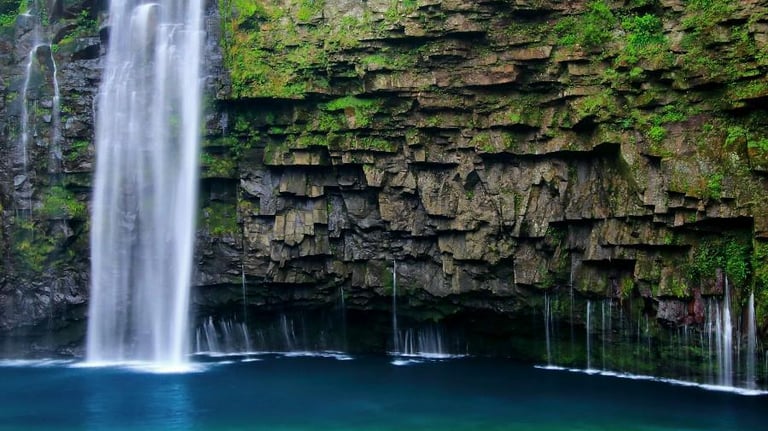

Sogi Falls Park is a nature-rich park located in Isa City, Kagoshima Prefecture, and is home to Sogi Falls, one of the most famous waterfalls in Japan, known as the "Niagara of the East. This waterfall has a magnificent scale of approximately 210 meters in width and 12 meters in height, and shows different expressions throughout the four seasons.
Sogi Falls Park
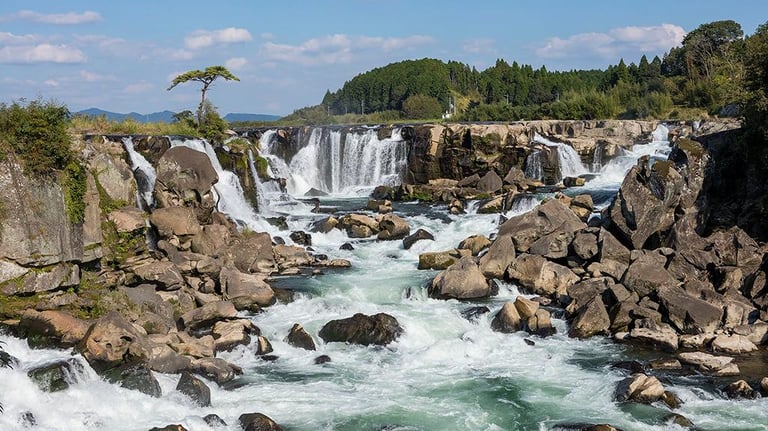

Sogi Power Plant Remains
The Sogi Power Plant Ruins are the remains of a historic hydroelectric power plant in Isa City, Kagoshima Prefecture. The building was constructed approximately 90 years ago and features a distinctive brick design reminiscent of medieval European castles. It was completed in 1909 and boasted an output of 6,300 kilowatts, the largest in Japan at the time. It was later submerged at the bottom of Lake Otsuru with the completion of Tsuruta Dam, and is now only visible during dry periods.
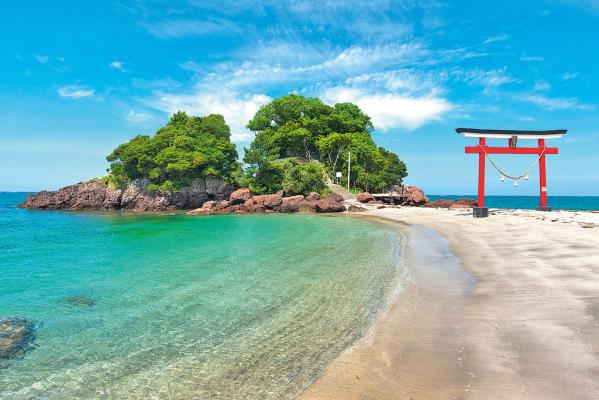

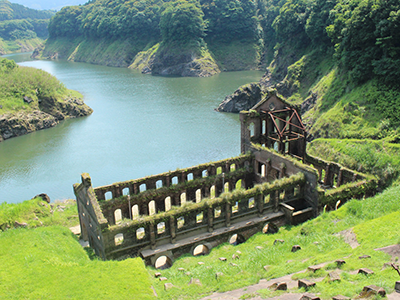

Arahira Tenjin is a shrine with a unique landscape located in Kanoya City, Kagoshima Prefecture. The shrine stands on Tenjin Island, a small island jutting out from the coast into the sea, and its beautiful natural surroundings and mysterious atmosphere attract many tourists. The shrine also has a long history dating back to the Warring States period and is dedicated to Sugawara Michizane, a well-known god of learning.
Arahira Tenjin
Yurigahama Beach
Yurigahama Beach is located on the east side of Yoron Island, Kagoshima Prefecture, and is known as a fantastic sandy beach that appears only seasonally. This beach usually appears from spring to autumn, about 1.5 km offshore from Daikanaku Beach, only during low tide from mid-tide to high tide. The pure white sands and clear waters of Yurigahama Beach form a spectacular view that attracts visitors.
